
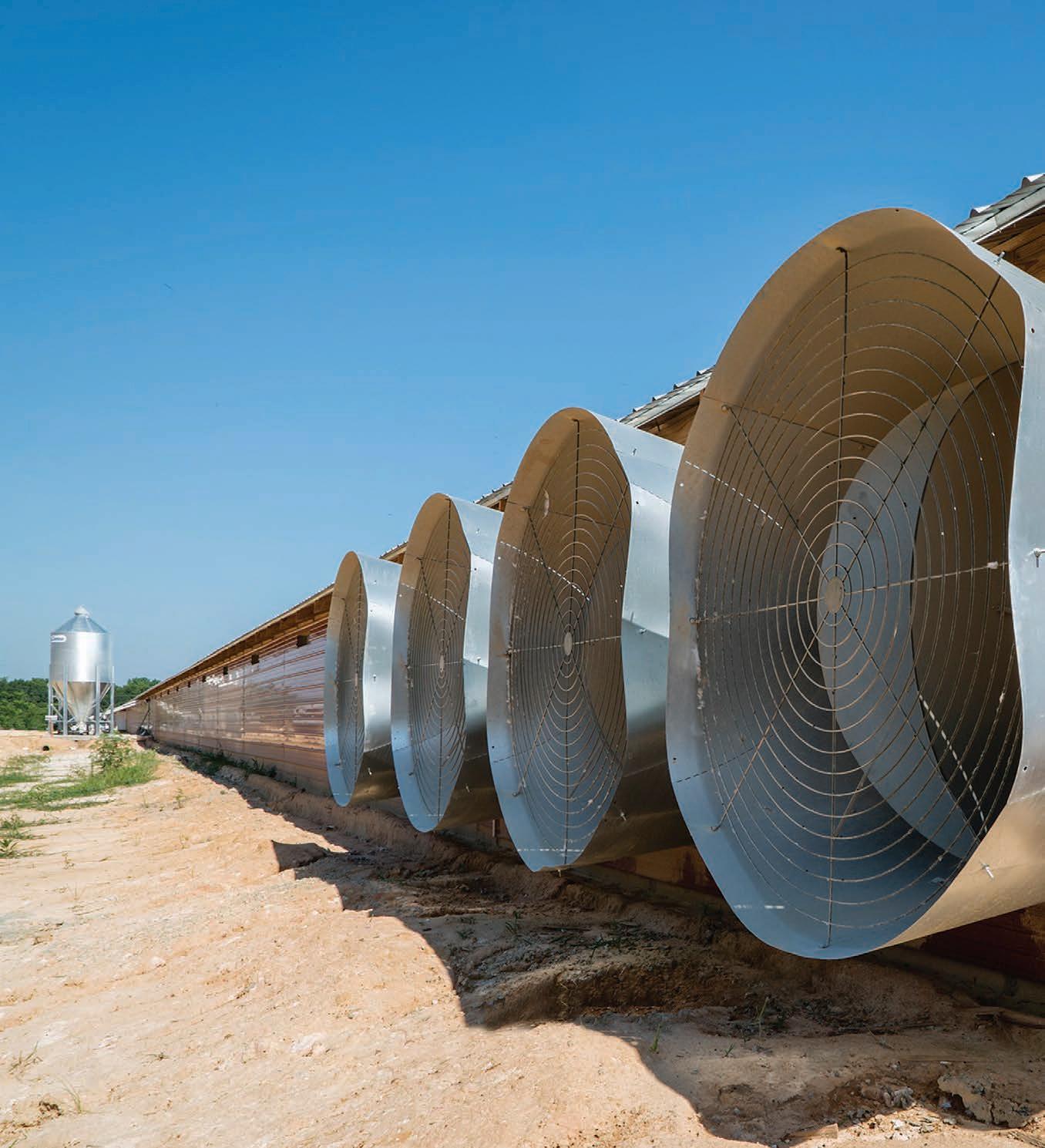





www.poultrytimes.com Your poultry industry news source since 1954 June 3, 2024 HOUSING & EQUIPMENT
It’s in our name, and it’s in our craftsmanship. Every American Coolair product is manufactured in our Jacksonville, Florida plant, using American raw materials such as steel sheets and coil, and aluminum sheets, coil and ingot. We produce the most durable ventilation products and evaporative cooling systems for the poultry, dairy, swine, greenhouse, commercial and industrial fan industries. Our fans outlast any other fans, which is why we still carry parts for fans manufactured over 50 years ago. Count on American Coolair for superior, responsive customer service and 100% commitment to quality American design and engineering.

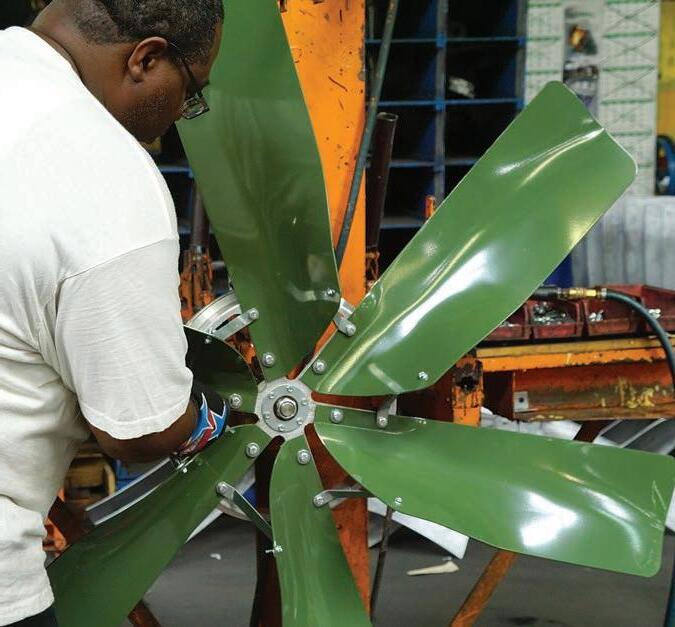








P.O. Box 2300 | Jacksonville, FL | 32203-2300 v: 904/389-3646 | f: 904/387-3449 | agfans@coolair.com | www.coolair.com
REASON #1 ALL-AMERICAN BEST FANS. PERIOD. Value that Stands the Test of Time







News
6 | Four Ga. governors pay tribute to poultry icon Abit Massey
Business Features
12 | Americold breaks ground on cold storage facility
Calendar
19 | Keep ammonia from filling up a poultry house
23 | Benson Hill, Perdue Farms team up on broiler soybean meal

JUN 4 — AFIA/KSU-500, Fundamentals of Feed Manufacturing. Online course runs through July 9, 2024. Contact: American Feed Industry Association, 2101 Wilson Blvd., Suite 810, Arlington, Va. 22201. Ph: 703524-0810; www.afia.org.
JUN 4-6 — AFIA FOOD
SAFETY MODERNIZATION
ACT PREVENTIVE CONTROL
QUALIFIED INDIVIDUAL
TRAINING, The Inn at Opryland,
26 | Report gives insight on future beef, chicken, pork prices
Nashville, Tenn., Contact: American Feed Industry Association, 2101 Wilson Blvd., Suite 810, Arlington, Va. 22201. Ph: 703524-0810; www.afia.org.
JUN 8 — AP&EA ‘EVENING OF FUN’, Birmingham–Jefferson Convention Center, Birmingham, Ala. Featured performer: Kameron Marlowe. Contact: Alabama Poultry & Egg Association, P.O. Box 140, Montgomery, Ala. 36101. Ph: 334-265-2732; www.alabamapoultry.org.
HOUSING & EQUIPMENT
Viewpoints





“Although it has never been a question in my mind that folks in agriculture are there for each other when times are tough, it is wonderful to see the agricultural community support each other in this new way.” — Sarah Covington | 10
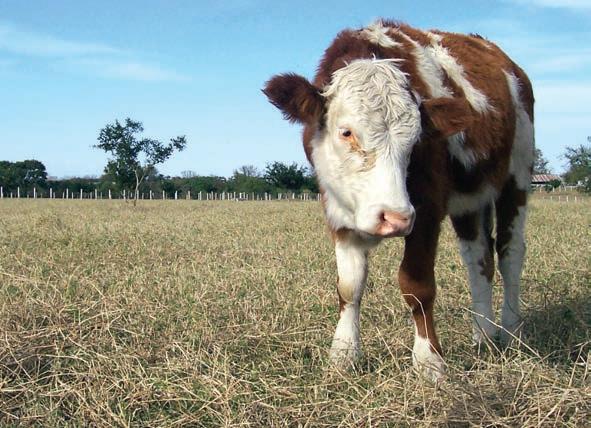
7 | USDA unveils efforts to reduce the spread of avian influenze
Connect



Visit us at: POULTRYTIMES.COM 24/7 on the World Wide Web or scan the code to the right /poultrytimes @PoultryTimes /poultrytimesga

POULTRY TIMES POULTRYTIMES.COM 5 VOL. 71 | NO. 11 | JUNE 3, 2024
www.poultrytimes.com Your poultry industry news source since 1954 June 3, 2024 HOUSING & EQUIPMENT IN THIS ISSUE On the cover
with us
24

CORPORATE HEADQUARTERS
POULTRY TIMES PO Box 1338 Gainesville, GA 30503 PH | 770-718-3443 FAX | 770-532-4894
POULTRY TIMES STAFF
CINDY WELLBORN
General Manager, Poultry Times/PoultryTimes.com 770-718-3443 cwellborn@poultrytimes.com
DAVID B. STRICKLAND Editor, Poultry Times 770-718-3442 dstrickland@poultrytimes.com
ELIZABETH BOBENHAUSEN
Content Writer, Poultry Times 770-209-3335 ebobenhausen@poultrytimes.com
RACHEL DANFORD Digital Manager, PoultryTimes.com 770-831-8631 rdanford@poultrytimes.com
STACY LOUIS
Sales Manager, Poultry Times/PoultryTimes.com 770-718-3445 slouis@poultrytimes.com
JANICE SISK
Sales & Administrative Assistant, Poultry Times/PoultryTimes.com 770-718-3439 jsisk@poultrytimes.com
KIM EWING
Circulation 770-718-3420 kimewing@poultrytimes.com
Index of Advertisers
Be sure to pay a visit to these esteemed sponsors of the Poultry Times, recognizing them as vital contributors to the industry who greatly appreciate your support.
Ag Lighting | 17 615-378-0108; www.poultrylights.com
Agralarm | 19 888-968-2802; www.agralarm.com
American Coolair | 2 904-389-3646; www.coolair.com
Big Dutchman | 13 616-582-4000; www.bigdutchmanusa.com
Creekview Mfg. | 32 717-445-4922; creekviewmanufacturing.com
Eagan Mfg. | 20 870-878-6805; www.eaganmfg.com
Farm Alarm | 19 800-407-5455; www.farmalarm.com
Farmer Boy Ag | 26 717-866-7565; www.farmerboyag.com
Flame Engineering | 24 800-255-2469; www.flameengineering.com
FPM Inc. | 16 402-729-2264; www.fpmne.com
Gas-Fired Products | 16 800-849-7311; www.spaceray.com
Henning Companies | 27 515-253-0943; www.henningcompanies.com
Hog Slat | 39 800-949-4647; www.hogslat.com
IMPEX | 18 770-534-1590; www.impex.nl
Publication Disclaimer
Poultry Times (USPS 217480) ISSN 0885-3371 is published biweekly, 345 Green Street, N.W., Gainesville, GA 30501. Telephone 770-536-2476; Fax 770532-4894. Postage paid at Gainesville, Georgia 30501. Poultry Times assumes responsibility for error in first run of an in-house designed ad only. Advertisers have ten (10) days from publication date to dispute such an advertisement. After ten (10) days, ad will be deemed correct and advertiser will be
Kelley Mfg. | 18 800-444-5449; www.kelleymfg.com
Kuhl Corp. | 15 908-782-5696; www.kuhlcorp.com
Kunafin (The Insectary) | 37 800-832-1113; www.kunafin.com
L.B. White | 31 608-783-5691; www.lbwhite.com
Lewis Brothers | 25 912-367-4651; www.lbmfg.com
LVI Enterprises | 32 717-304-1668; www.lvimfg.com
Motomco | 3 800-237-6843; www.motomco.com
National Incinerator | 15 205-589-6720; www.nationalincinerator.com
Newton Crouch | 28 800-241-1350; www.newtoncrouch.com
Overdrive Lighting | 23 800-657-0509; www.aglights.com
Precision Lighting | 1, 4, 22 800-737-1837; www.poultrylighting.com
The Egg Carton Store | 37 866-333-1132; www.eggcartonstore.com
Walinga USA | 40 800-466-1197; www.walinga.com
Weightech | 21, 28 800-457-3720; www.weightechinc.com
charged accordingly. Proofs approved by advertiser will always be regarded as correct. Subscriptions: Surface mail in U.S., $25.00 for one year, $45 for two years and $65 for three years. Business or occupation information must accompany each subscription order.
Change of Address: Postmaster, report change of address to Poultry Times, P.O. Box 1338, Gainesville, GA 30503.
Companion Poultry Publications: A Guide to Poultry As-
sociations; Poultry Resource Guide.
The opinions expressed in this publication by authors other than Poultry Times staff are those of the respective author and do not necessarily reflect the opinions of Poultry Times. Advertisement content is the sole responsibility of the advertiser. Poultry Times assumes no liability for any statements, claims or assertions appearing in any advertisement. © 2024 Metro Market Media
POULTRY TIMES POULTRYTIMES.COM 6
Gainesville, Georgia 30503
USDA unveils efforts to reduce the spread of avian influenza
BY ELIZABETH BOBENHAUSEN Poultry Times staff ebobenhausen@
poultrytimes.com
GAINESVILLE, Ga. — In March, the United States saw for the first-time avian influenza jump from avian species to dairy cattle. H5N1, otherwise commonly known as bird flu, was found in cattle in several states in the U.S. After the outbreak began, the authorities at the USDA began taking the necessary precautions to keep the virus from spreading.
According to a statement released by the USDA, the authorities at the USDA began tracing animal movements, sampling herds of cattle for the illness and monitoring milk along with meat coming from cattle. The USDA did not act alone. The agency worked in cooperation with other federal agencies.
In April, the Centers for Disease Control and Prevention confirmed one person contracted bird flu from cattle and to receive attention for pink eye. The USDA issued a warning “to limit the movement of lactating dairy cattle and to collect and aggregate H5N1 test results to better understand the nature of the outbreak.”
The U.S. Department of Health and Human Services is partnering with the U.S. Food and Drug Administration and the CDC for the purpose of initiating new actions such as increased testing and laboratory screenings and testing capacity, genomic sequencing, and other intercessions to slow the spread of avian influenza in food products.

USDA added that it, “is announcing assistance for producers with H5N1 affected premises to improve on-site biosecurity in order to reduce the spread. In addition, USDA is taking steps to make available financial tools for lost milk production in herds affected by H5N1. Building on the Federal Order addressing premovement testing, these steps will further equip producers with tools they can use to keep their affected herds and workers healthy and reduce risk of the virus spreading to additional herds.”
USDA lists the following as its initiatives to limit the spread of avian influenza:
• Protecting against the potential spread between animals and humans.
• Biosecurity planning and implementation support for producers.
• Heat treatment funding to as-
sist in disposing of milk in a biosecure way.
• Producer reimbursement for veterinary costs for premises positive with H5N1.
• Offset shipping costs for flu testing performed at the National Animal Health Laboratory Network (NAHLN).
• Producer compensation for milk production losses.
• Working with the states on limiting lactating cattle movement.
The release added that the HHS, “announced new funding investments through CDC and FDA totaling $101 million to mitigate the risk of H5N1 and continue its work to test, prevent, and treat H5N1. Although the CDC’s assessment of the risk of avian influenza infection for the general public continues to remain low at this time, these investments reflect the department’s commitment to priori-
tizing the health and safety of the American public.”
The HHS noted that it has been preparing for avian influenza outbreaks for the past 20 years, and announced the following as initiatives to assist with public health:
• Ensuring communities are safe, healthy and informed.
• Ensuring that the U.S. food supply remains safe.
• Safeguarding U.S. agriculture and the well-being and livelihood of the nation’s farmers and farmworkers.
• Monitoring all trends to assist with mitigating risk and preventing the spread of H5N1 among both animals and people.
More information about USDA’s dairy cattle H5N1 response can be obtained at www.aphis. usda.gov/livestock-poultrydisease/avian/avian-influenza/ hpai-detections/livestock.
POULTRY TIMES POULTRYTIMES.COM 7 COVER
STORY
PT
Four Georgia governors recently paid tribute to poultry icon Abit Massey
BY JEFF GILL The Times
GAINESVILLE, Ga. — Four Georgia governors, among others, paid tribute May 20, to iconic Hall County poultry pioneer Abit Massey.
“I would suggest that a biography needs to be written about Abit Massey and it needs to be titled ‘The Best Governor the State of Georgia Never Had,’” said former Gov. Nathan Deal, who served from 2011 to 2019.
“He not only recognized those elected individuals who served in both the House and Senate, but he recognized their secretaries and their staff,” he said to a crowd gathered at First Baptist Church Gainesville. “He had a style of what we now call influencers.”
Kind words flowed during the event, which was part of the Rotary Club of Gainesville’s series of “Game Changer” programs.
Massey wasn’t able to attend because of health concerns, which was also mentioned during the event.
“I’ve got news for you,” said former Gov. Roy Barnes, who served from 1999 to 2003. “Cancer is no match for Abit Massey.”
“I’m just so sorry that Abit’s recent health news does not allow him to be here with us today,” Gov. Brian Kemp said. “He would just be tremendously honored and humbled in front of so many of his friends and colleagues.”
Kemp added, “It’s certainly a testament to a life well-lived that so many of our state’s influential leaders, past and present, have taken time to honor (Massey) here today.”
Former Gov. Sonny Perdue, who led Georgia from 2003 to 2011 and served as U.S. secretary of agriculture under President Trump, also lauded Massey in a video.
“Abit Massey, you’re the man,” he said. “I don’t know if you really invented the chicken, but you sure made it famous here in Georgia.”
Massey’s ties to poultry go back decades in Georgia.
The 1949 University of Georgia graduate was president of the Georgia Poultry Federation from 1960 to 2009 and is now the group’s president emeritus.
In addition to advocating for the poultry industry, he has worked to expand research in the field. The Georgia Poultry Laboratory Network sits on Abit Massey Way off Ga. 365 in northeast Hall.
In 2019, he was inducted into the American Poultry Historical Society’s Poultry Hall of Fame.
Massey also has met with U.S. presidents, including Richard Nixon, Gerald Ford, Bill Clinton and Jimmy Carter.
In a November 2023 interview with The Times, he recalled meeting John F. Kennedy

Four Georgia governors paid tribute to Gainesville poultry icon Abit Massey on May 20. Pictured, from left, are Gov. Brian Kemp and his wife, Marty; University of Georgia president Jere Morehead; and former governors Nathan Deal and Roy Barnes. Former Gov. Sonny Perdue spoke in a video presentation.
at the White House in June 1962, along with four governors, to talk about pressing poultry issues.
“Thanks to President Kennedy, we did get relief and were able to expand the export market to the European markets,” Massey said. “That is obviously a great memory.”
He was also remembered on a more personal
level by his son, Lewis Massey, who served as Georgia secretary of state from 1996 to 1999.
He quoted Scripture when describing his father’s attributes.
“Love, joy, peace, patience, goodness, gentleness, kindness, faithfulness and self-control — I think we would all agree that was really the blueprint for dad’s life,” he said.
POULTRY TIMES POULTRYTIMES.COM 8
Jeff Gill The Times

GPF elects officers, highlights successes at annual meeting
DAVID B. STRICKLAND Poultry Times Editor dstrickland@
poultrytimes.com
GAINESVILLE, Ga. — Highlighting successes and working through challenges were all noted during the Georgia Poultry Federation’s recent annual meeting held at the Georgia Poultry Laboratory Network headquarters in Gainesville, Ga.
During this annual meeting, GPF elected its new chairman for the upcoming year.
Blake Wikle, S4 Sanitation Services, takes the helm as GPF chairman for 2024-2025. Brad Respess, Tip-Top Poultry, now becomes the group’s immediate past chairman.
“I have always wanted to be associated with people just like you guys,” Wikle said. “I am honored for it, and I am prepared to serve in any manner that I can.”
And with the changing of the GPF chairman guard, Respess, in speaking about Wikle, said, “we are so thankful for his commitment to the industry … wherever he is needed, he is up to the challenge.”
Also serving as officers for the upcoming year will be Michael Crump, Wayne-Sanderson Farms, senior vice chairman; Vice Chairmen (1-year-terms) Steve Snyder, Claxton Poultry; and Kevin Grindle, Mar-Jac Poultry.
New directors will include Adam Durkin, Fieldale Farms; Steve Schimweg, Tyson Foods; and Jack McMullan. Reelected to a full year term is Dimitry Saknowsky, Harrison Poultry; and carryover directors will be James Bradford, Pilgrim’s; Scott Cochran, Columbia Farms; Lucas Hill, Pilgrim’s; Kelly Horne, Darling Ingredients; Patrick Johnston, Koch Foods; Tim Little, Perdue Farms; Stephen Selman, Sanderson Farms; and Steve
Summer, Cal-Maine Foods.
In his outgoing statements as the previous year’s chairman, Respess said, “It has been really good for me being on the board and as chairman seeing the work that the federation does for our industry. You all work tirelessly throughout the industry to build relationships, to help guide and protect the industry, and I couldn’t be more appreciative of your labor and of your efforts.”
“As we go forward, this year’s (state legislative) session has ended but the federation is going to continue working especially with the Environmental Protection Division here in Georgia as they work on revising the state’s nutrient production strategy through the environmental permitting process,” Respess added. “We are going to make sure that we have our industry represented to support and give voice to what needs we have as an industry.”
Blake Wikle, left, S4 Sanitation Services, is the newly elected chairman of the Georgia Poultry Federation. Mike Giles, center, GPF president, and Brad Respess, Tip-Top Poultry, GPF past chairman, congratulated Wikle during the group’s recent annual meeting in Gainesville, Ga.
Photo by David B. Strickland
“On the local government front, we still see proposed ordinances and other local government actions that limit where poultry houses can be built,” he noted. “The federation is working to oppose these wherever they crop up.”
Poultry Strong
It was also announced during the meeting that the federation’s annual outdoor music extravaganza, Georgia Poultry Strong, will be Saturday, Oct. 19, once again at Lake Lanier Islands in Buford, Ga. The “evening under the stars” will feature musical performer Justin Moore.
Mike Giles, GPF president, added that Moore is a multiplatinum, award-winning entertainer with 12 number one hit songs, with his most recent being, “You, Me and Whiskey.”
“It’s going to be a very exciting, lively show,” Giles said, adding that, “we are very excited about this concert; it’s going to be really a lot of fun.”
For more information about this year’s Georgia Poultry Strong event, visit https://gapf.org/ events/.
POULTRY TIMES POULTRYTIMES.COM 9-
PT
VIEWPOINT

Bringing mental health awareness, support to ag.
COMMENTARY
BY
SARAH COVINGTON
American Farm Bureau Federation
Sarah Covington is a Farm Bureau member from North Carolina. She works as a physician associate in oncology, and also owns Hawfields Cattle Co., specializing in registered Scottish Highland cattle. This column is drawn from one presented in the AFBF’s “Focus on Agriculture” series.
WASHINGTON — Throughout the years I have seen our agriculture community come together during times of need. Wildfires, floods, droughts, tornadoes, and hurricanes, for example, all bring the appropriate awareness from news headlines but what about the mental health crisis affecting the people in our industry?
The chronic, sometimes daily struggles of farmers and ranchers, whether financial, family, weather, economic, or regulatory in nature all play a role in our daily lives. Often, we are left to absorb the hardships alone.
That is why I’m thrilled that the American Farm Bureau and the Farm Family Wellness Alliance recently came together to unveil a new resource that can help all of us in agriculture remember we are not alone. It is an electronic platform called Togetherall, a tool developed to bring mental health awareness and support to others.
For my fellow millennials, think Twitter meets Reddit; only so much better. For my older and wiser folks, think of a virtual gathering of peers without nametags or introductions. In this column, I’m sharing my “real time” experience using Togetherall.


Signing up was actually pretty easy. I opened my web browser on my phone and typed in fb.org/farmstateofmind then scrolled to the Togetherall logo. Once I clicked on the logo and was taken to the Togetherall website, I was greeted with a bright yet simple home page where I click ed the join button and filled out my information. A username is autogenerated for me; the name gives me a slight laugh. It is both uplifting and random. “We are off to a good start,” I said to myself.
Next, I was asked to fill out some basic demographic information, although it’s important to note I was allowed to be as specific or vague as I felt comfortable with. After that section was completed, I clicked the community button and looked over my options.
Truthfully, I was impressed! When I first joined, I noticed that there are different communities such as health care professionals, parents, first responders, teachers and, of course, agriculture. Within these communities there are
separate groups. For example, there was a group dedicated to uplifting and positive posts and others specifically for people to vent.
I soon found myself scrolling through posts. The postings found on Togetherall are honest, real and heartfelt. Even today as I continue to browse the platform, I empathize with the members voicing struggles and smile as other anonymous users post supportive reflections. Although it has never been a question in my mind that folks in agriculture are there for each other when times are tough, it is wonderful to see the agricultural community support each other in this new way.
How exciting is it to have a platform where we can talk anonymously with other people in our agricultural family who “get us.” We can go to Togetherall to voice hurt, frustration, or even anger on the hard
POULTRY TIMES POULTRYTIMES.COM 10
POULTRY TIMES
POULTRY TIMES

days and offer fellowship and support on the days we are strong. Having a day that feels like everything is going against you and you just want to quit? Why not take a minute for self-care and scroll Togetherall? Scroll through postings that will make you smile, that will make you laugh. Scroll through postings that make you feel like you are not alone. But most of all, log onto Togetherall to gain hope and support so that the hard days do not stick to us like the beast they can be and rather roll off of us like freshly made hay bales roll out of a bailer onto our fields.
“Although it has never been a question in my mind that folks in agriculture are there for each other when times are tough, it is wonderful to see the agricultural community support each other in this new way.”
POULTRY TIMES POULTRYTIMES.COM 11
example, dedicated postsscrolling postingsthe the andreflections. a folks each iteach a talkfamilyhard
ag.

BUSINESS Americold breaks ground on cold storage facility
KANSAS CITY, Mo. — Americold Realty Trust has officially broken ground on a new $127 million cold storage facility in Kansas City, Mo. State and local leaders recently joined company executives to celebrate the company’s new investment in Missouri.
“Americold is yet another example of an industry-leading employer choosing Missouri due to our economic advantages,” Missouri Gov. Mike Parson said. “This innovative company’s presence in Kansas City is a welcome addition to the region’s thriving logistics sector. We congratulate Americold on its new facility and look forward to the benefits that this investment will provide for Missourians.”
The company plans to create nearly 190 new jobs in the region. The new 335,000-square-foot facility in Kansas City is part of a strategic collaboration with Canadian Pacific Kansas City to colocate Americold warehouse facilities on the CPKC network, the companies noted.
“We are thrilled to break ground on a new cold storage facility in Kansas City,” said George Chappelle, CEO of Americold. “This facility is the first to be built as part of our strategic collaboration with CPKC. By combining our cold storage capabilities with CPKC’s extensive rail network, Americold is poised to deliver a differentiated offering to support more customers across North America.”
“Today’s groundbreaking for this new facility marks the beginning of a significant collaboration that shows what we can achieve with vision and working together for our customers,” said Keith Creel, president and CEO of CPKC. “This project is the first of many across our network and, when combined with our unparalleled cross-border service, will build a new refrigerated supply chain for our customers. Just over one year ago here in Kansas City, when we celebrated the creation of CPKC,


we talked about the unique economic benefits our unrivaled network would bring to Kansas City, Mo., and beyond. We are seeing that happen today.”
The new facility will support CPKC’s Mexico Midwest Express service, North America’s only single-line rail service offering for refrigerated shippers between U.S. Midwest markets and Mexico, the company said, adding that it will also enable more seamless and efficient service for MMX customers.
“I am proud to welcome Americold into our growing and vibrant business community in Kansas City,” Quinton Lucas, Kansas City mayor, said. “With the ability to tap into our talented, highly skilled workforce and our centralized Canadian Pacific Kansas City
transportation system allowing access to more consumers internationally, Kansas City is the prime location for an innovative company like Americold to plant its roots. We look forward to the continued success of Americold in our community and the exciting new opportunities available to Kansas City as a result.”
“We’re thrilled to officially welcome Americold to Kansas City,” said Steven Anthony, vice president of business development for the Economic Development Corp. of Kansas City Mo.“Their presence here, along with the great partnership with CPKC, will further reinforce Kansas City’s deep strength in cold storage warehousing and logistics. The new jobs that will be generated and high-paying wages are icing on the cake.”
“We’re proud to support Americold alongside our partners as the company establishes its first facility in Kansas City,” said Michelle Hataway, director of the Missouri Department of Economic Development.“This exciting project will
help Missourians prosper through its significant investment, job creation, and positive impact on our state’s transportation and logistics industry.”
“It is always exciting when a company breaks ground in Missouri, and we are thrilled to officially welcome Americold to Kansas City,” said Subash Alias, CEO of Missouri Partnership. “Americold is joining more than 20,000 distribution and logistics companies in the state who are benefitting from Missouri’s central location, solid infrastructure, and low business costs. We look forward to watching Americold’s facility take shape and seeing their success unfold here in Missouri.”
Missouri Partnership worked with several partners to attract Americold to Kansas City, including: the City of Kansas City, Economic Development Corporation of Kansas City, Missouri, KC SmartPort, Missouri Department of Economic Development, Missouri One Start, Evergy, and Spire, the group noted.
POULTRY TIMES POULTRYTIMES.COM 12
POULTRY
POULTRY TIMES

Pilgrim’s Pride reports 1Q results with $4.4B net sales
GREELEY, Colo. — Pilgrim’s Pride Corp. has reported its first quarter 2024 financial results. Among the first quarter highlights, includes:
• Net sales of $4.4 billion.
• Consolidated GAAP operating income margin of 5.7 percent.
• GAAP net income of $174.9 million and GAAP EPS of 73 cents. Adjusted net income of $182.9 million or adjusted EPS of 77 cents.
• Adjusted EBITDA of $371.9 million, or an 8.5 percent margin, with adjusted EBITDA margins of 9.4 percent in the U.S., 6.4 percent in Europe, and 9.2 percent in Mexico.
• Diversified U.S. fresh portfolio continues to demonstrate its strength with dynamic market conditions, through increased partnership with key customers in both Case Ready and Small Bird, and improved operational excellence in Big Bird.
• Prepared Foods continues to accelerate its profitable growth through branded fully cooked offerings as Just Bare® and Pilgrim’s® net sales collectively grew 30 percent from prior year and continue to gain distribution across all channels.
• Europe continued its journey to improve through additional distribution with key customers and further optimization of manufacturing and support activities. Diversification through brands continues to grow as net sales for Richmond® and Fridge Raiders® grew 6.5 percent and 9.6 percent respectively.
• Mexico improved results given balanced supply and demand fundamentals in com -
modity markets, deepened relationships with key customers, and expanded presence in differentiated offerings.
• Strong liquidity position and net leverage ratio of less than two times adjusted EBITDA through prudent management of working capital.
• Increased diversification of the portfolio to support profitable growth as protein conversion plant in South Georgia initiated start up in March.
• Completed an external review of our GHG (greenhouse gas) emission intensity levels associated with the sustainability linked bond. Emission intensity declined by 15.6 percent between 2019 and 2022 from improved production efficiencies, capital investments, and energy infrastructure enhancements.
“Although we experienced depressed market conditions and persistent consumer inflation throughout 2023, we saw this as opportunity to enhance our competitive advantage,” Fabio Sandri, Pilgrim’s CEO, said. “To that end, we focused on consistent execution of our strategies, controlling what we can control, and maintaining investment in our operations. These efforts further strengthened our business, accelerating our profitable growth as market conditions evolved.”
During the first quarter, the U.S. continued to improve as Big Bird realized significant benefits from enhanced operational efficiencies and market fundamentals, the company said. Case Ready and Small Bird continued to grow from increased distribution with Key Customers, promotional activity, and the value of chicken to consumers. Prepared Foods also drove significant growth in both retail and food service through branded offerings, further diversifying the portfolio.
“Our U.S. portfolio continues to demonstrate an ability to capture market upsides while minimizing downside risk through a diversified set of offerings across multiple bird sizes and valueadded items,” Sandri said. “This approach is further reinforced by our key customer partnerships and relentless focus on operational excellence.”
(Continued on page 15)


The newest addition to Big Dutchman’s line-up of cage-free true aviaries, the NATURA® Visio is a two-tier aviary system that we are excited to introduce into the market. It features our unique “twin belt” design which allows for high visibility of the eggs on both tiers.
Contact your local distributor or sales representative to learn more.
POULTRY TIMES POULTRYTIMES.COM 13 +1-616-582-4000 | bigd@bigdutchmanusa.com WWW.BIGDUTCHMANUSA.COM
Bringing aviary visibility to another level
PATENT PENDING-----


(Continued from previous page)
In Europe, consumer inflation and labor costs continue to be challenging, the company said, adding that its team secured additional business with retail key customers, drove branded growth above category averages, and identified further efficiencies in manufacturing and support activities.
“Over the past year, the Europe team executed a variety of efforts to improve Key Customer partnerships, enhance our operational excellence, and further diversify our portfolio of branded offerings,” Sandri noted. “Our foundation is much stronger today and we will continue to explore ways to accelerate our journey of profitable growth.”
Mexico improved through a combination of enhanced supply and demand fundamentals in the commodity market, increased key customer partnerships, and further momentum of branded offerings. Operational excellence efforts to expand capacity and mitigate risk in live operations remain on track, the company said.
“Our strategies continue to demonstrate their effectiveness as we’ve grown ahead of the markets with our key customers,” Sandri noted. “Similarly, our branded portfolio continues to gain acceptance throughout the market, further diversifying our portfolio. When these efforts are combined with our operational excellence initiatives to expand capacity, we can further drive our profitable growth.”
Pilgrim’s efforts in sustainability continue to drive meaningful progress, the company said, adding that between 2019 and 2022, GHG emissions intensity has fallen by 15.6 percent, translating into an absolute reduction of
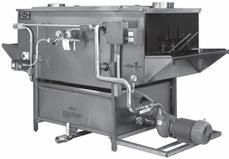
216,000 metric tons.
“We are proud of our leadership mindset regarding sustainability,” Sandri said. “Given our continued efforts, we can elevate our performance in GHG intensity reduction, creating a better future for our team members and further reinforcing our vision to become the best and most respected company in our industry.”
For more information, visit www.pilgrims.com.
Chore-Time taps
Shoemaker as associate product engineer

MILFORD, Ind. — Matthew Shoemaker has been named associate product engineer for Chore-Time, according to Todd Martin, engineering manager for the CTB Inc. business unit. In his new position, Shoemaker will design, develop, and create innovative poultry components and equipment to meet customer expectations and business goals, the company announced.
Shoemaker is a recent graduate of Trine University, Angola, Ind., where he obtained a bachelor’s degree in design engineering technology. Throughout his time at Trine University, he completed multiple engineering related internships and held part-time positions in the Warsaw, Ind., area.
Shoemaker is a native of Leesburg, Ind., where he still resides.


IFEEDER board discusses strategic plan and projects
ARLINGTON, Va. — The Institute for Feed Education and Research (IFEEDER) recently held its Board of Trustees meeting to discuss its current projects and install new board leadership and trustees.
“IFEEDER has made great strides in advancing our strategic plan, becoming a trusted resource for the animal food industry and our allied stakeholders, advancing sustainability research, and broadening IFEEDER’s pool of resources,” Lara Moody, IFEEDER executive director, said. “These
collaborations strengthen the industry’s collective efforts toward sustainability and innovation in the feed and pet food sectors.”
In the next year, IFEEDER plans to work on several projects in accordance with its strategic plan, including: adding new resources to the Animal Food Industry Sustainability Toolkit, supporting other research and pursuing education and sustainability projects on the animal food industry’s behalf. IFEEDER will also update its datasets on U.S. feed and pet food ingredient consumption.
As part of its business meeting, the IFEEDER Board of Trustees recognized Mike Gauss, president of Kent Nutrition Group Inc., for
(Continued on next page)


POULTRY TIMES POULTRYTIMES.COM 15
KUHL CORP. FLEMINGTON, NJ 08822 – USA www.kuhlcorp.com hyk@kuhlcorp.com HATCHING EGG WASHERS HATCHER TRAY WASHERS COUNTERS SEPARATORS UNSTACKERS REDUCES BACTERIA COUNT TO NEAR ZERO
Shoemaker
his leadership as board chair for the 2023-24 IFEEDER fiscal year, which ended April 30, and installed Dr. Carlos Gonzalez, vice president of global regulatory affairs at Hill’s Pet Nutrition Inc., as the new chair for the 2024-25 fiscal year, which began May 1. Dr. Stever
Lerner, senior scientific and business advisor of Novonesis Animal and Plant Biosolutions, will serve as vice chair for 2024-25.
With the installation of three new trustees, the IFEEDER Board of Trustees includes: John Akridge, MFA Inc.; Susanna Elliot, Alltech; Gonzalez; Courtney Hall, CHS Inc.; Jamee Krug Blahauvietz,

Elanco Animal Health; Lerner; Scott Lovin, AgState; Paul Phillips, DuraPlas Inc./Maxi-Lift Inc.; Dan Rice, Western Milling; Dr. Chad Risley, Berg+Schmidt America LLC; and Dr. Juan Tricarico, Innovation Center for U.S. Dairy.
IFEEDER also thanks its outgoing trustees for their service: Dr. Leah Dorman, Phibro Animal Health Corp.; Gauss; and Dr. Chris Hostetler, National Pork Board.
Ziggity and Butterfly Concepts appoints EMEA account manager
MIDDLEBURY, Ind. — Earlier this year, Ziggity Systems and Butterfly Concepts welcomed André van Rij, owner of ACPoultry, as their new contracted account manager, specializing in poultry watering and feeding. Van Rij will be serving the EMEA (Europe, Middle East and Africa) territories. In this role, he will be responsible for marketing each company’s concepts, products, and providing


onsite technical services.
For the past 25 years in the poultry industry, van Rij has focused on sharing his knowledge of poultry housing, hatchery and processing equipment, and general poultry management with producers around the world. He has worked with companies of various sizes, educating an industry that helps feed the world. Van Rij will be splitting his responsibilities between Ziggity and Butterfly Concepts supporting producers to achieve the best results and add value to customers’ bird production, the companies said.
“Ziggity has had a presence in the EMEA territory for years,”’ said Ziggity President Robert Hostetler, who also serves as Butterfly Concepts’ managing director, “but this is the first time Butterfly Concepts has had a dedicated team member based in the region.”



Much like Ziggity’s mission for better bird welfare through hygienic water practices, Butterfly Concepts is focused on a more hygienic way to deliver feed through the use of perimeter feed trays, the companies added.
“Bringing André on board only means good things for both companies,” said Rob Steiner, Ziggity’s vice president of sales. “The poultry industry is seeking out unique and better ways to provide water and feed to birds. André shares the same vision and business ethics as we do and is dedicated to helping the end user. His wealth of experience is going to add tremendous value to both companies’ customers.”
Van Rij resides in the Netherlands with his wife, Marga. Together, they also run a bed and breakfast they started during the COVID pandemic.
Motion enters agreement to purchase
BIRMINGHAM, Ala. — Motion Industries Inc. has signed a (Continued from previous page)
Allied Circuits
Van Rij

definitive purchase agreement to acquire Allied Circuits, an electrical and automation company. The transaction is subject to customary closing conditions.
Located in Buffalo, N.Y., Allied Circuits designs, manufactures and services industrial control panels, electro-mechanical assemblies, robotic automation, and integrated solutions. Founded in 1987, the company serves customers in the Western and Upstate New York markets


and into Ontario, Canada, due to its proximity to the border. End markets include aerospace, automotive, filtration, fluid systems & plumbing, food & beverage, oil & gas, pharmaceutical, process industries, semiconductor, and water & wastewater treatment facilities.
The company will join Motion’s business unit, Motion Automation Intelligence (Motion Ai). The addition of Allied Circuits will provide an exceptional work-

force of highly skilled teammates, ATEX certification capabilities and over 20,000 square feet of additional production space to bolster Motion Ai’s existing presence in the area. Motion Ai’s total region size will expand to more than 100,000 square feet of production space and 150 people dedicated to serving existing and new customers, the company said.
“It’s a great match — including the business culture and core values — and we’re very excited about our customers’ expanded access to even more products and services,” Chris Scinta, partner at Allied Circuits, said. “Motion is an industry leader, and we are pleased to integrate employee talents and contribute to the company’s growth.”

“Our customers are growing, and we’re committed to growing with them,” said James Howe, president of Motion. “By combining our engineering teams, we can leverage highly experienced technical resources needed to design, program and support increasing automation needs within the region. This strategic acquisition will create new opportunities for our customers, teammates, and
supplier partners.”
Case Farms facility reaches 1 million hours without lost-time accident
MORGANTON, N.C. — Case Farms achieved a new safety milestone on April 29 after its Morganton processing facility reached 1 million man-hours without experiencing an Occupational Safety and Health Administration (OSHA) recordable lost-time accident.
“Achieving this benchmark is a direct reflection of the employees and supervisors along with the culture here at Case Farms. Together, we will all move in the direction of Case Farms’ commitment to both safety, and a premium product,” said Derrick Caldwell, day shift safety supervisor of the Morganton facility.
“Every member should take
(Continued on next page)




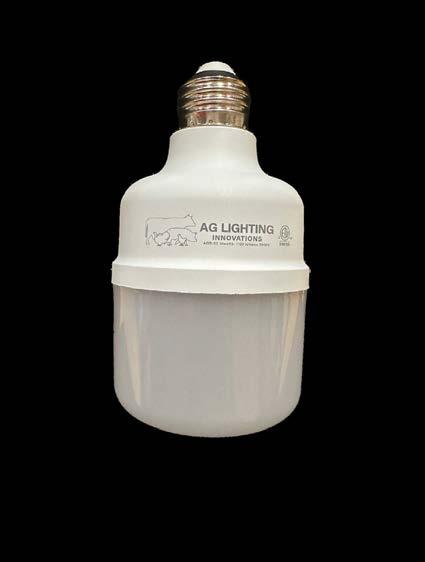
Retro Luminaire Retro Luminaire Retro Luminaire Modeled after our Modeled after our Modeled after our Farm-proven AG25 Farm-proven AG25 Farm-proven AG25 Half the lights Waterproof Low-profile Longer life Better Light. Better Life!----------
How do you keep ammonia from filling up your poultry house?
BY MICHAEL CZARICK, DR. BRIAN FAIRCHILD, GARRET ASHABRANNER & WILLIAM STRICTLAND University of Georgia
ATHENS, Ga. — You are frying eggs for breakfast. You get distracted and the next thing you know your eggs are burning and your kitchen is filling with smoke. What do you do first? Open the window to get rid of the smoke or remove the skillet from the stove to stop the generation of the smoke? You of course, remove the skillet from the stove, then open windows because opening the windows in itself doesn’t solve the problem, because your eggs are still burning and filling the kitchen with smoke.
Controlling ammonia in poultry houses presents a very similar situation. How do you keep your house from filling with ammonia? Sure, you can turn on exhaust fans to re -
move the ammonia, but to actually solve the problem you need to stop or at least slow the generation of ammonia.
At the beginning of a flock, producers with built-up litter typically control the generation of ammonia through the use of a litter treatment. But, for long-term ammonia generation control, producers need to limit the amount of moisture in the litter because moisture is one of the key building blocks of ammonia.
The fact is even at the beginning of a flock, ammonia control is tied to litter moisture control. This is because one of the most important factors determining litter treatment life is litter moisture. If the litter is not properly dried between flocks the resulting high ammonia generation rate will quickly overwhelm the litter treatment’s limited ammonia neutralizing
(Continued on next page)
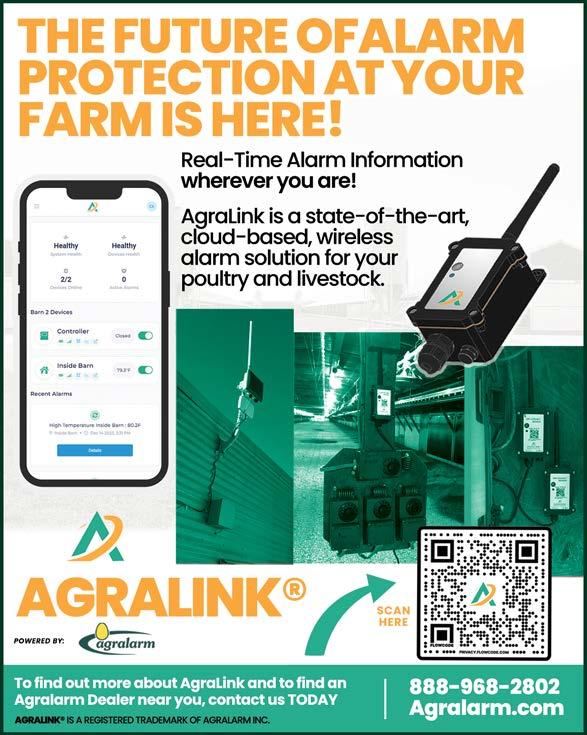





POULTRY TIMES POULTRYTIMES.COM 19 Peace of mind is now wireless!! No Monthly/Annual Fees to pay! No wires to install and maintain between buildings! Remote call in to check temperature and all conditions! Farm Alarm Systems T: 800.407.5455 • F: 704.753.5205 www.FarmAlarm.com Monitor: ➤ Power ➤ Temperature ➤ Water ➤ Ventilation ➤ Controller ➤ Curtain ➤ Feed over run ➤ Generator ➤ Customized settings by owner Wyr-LS 4.0
scrubbers
1
Ammonia
Figure
ability.
Another method of removing ammonia from a poultry house is through the use of a scrubber. An ammonia scrubber works by pulling air from a poultry house through a filter/media, typically containing some type of acid, which chemically scrubs/ removes the ammonia from the air. Though this may sound like a great idea, there are a couple of significant issues with this method of ammonia removal.
First, though a scrubber can potentially remove ammonia from the air in a poultry house, it scrubber does not remove moisture from the air or litter. If minimum ventilation rates are lowered in response to lower house ammonia concentrations, litter moisture levels will tend to increase, resulting in increased ammonia generation rates, which could easily overwhelm the ammonia-removing capacity of the scrubber.
Another important consideration is that since a scrubber’s ability to remove ammonia from the air requires a chemical reac-
tion, there is a limited amount of time before the chemicals will need to be replenished. This challenge is not that different from controlling ammonia early on during a flock through the use of a litter treatment. The litter generates ammonia. We apply a litter treatment to the litter, and the acid in the litter treatment neutralizes the ammonia, and ammonia levels are reduced until all the chemical is used up.
The greater the amount of ammonia being generated, the greater the amount of chemicals/litter treatment required and the shorter the life of the litter treatment. In either case, there is a limit to how long ammonia can be chemically removed from the air in a poultry house.
During the winter of 2023, a commercially available scrubber was installed in a broiler house and operated continuously for the last three weeks of a flock (Figure 1). The scrubber’s air exchange rate was measured and determined to be 300 cfm. Ammonia meters were installed on the intake and exhaust sides
Introducing EAGAN FAST TRACK Wall Vents


of the unit, along with temperature and RH sensors and measurements were recorded every minute.
The scrubber was found to be effective at lowering the concentration of ammonia of the air flowing through the unit. Ammonia concentrations were reduced by between 5 and 30 ppm with the greatest reductions corresponding with the highest incoming ammonia concentrations (Figure 2). One minor weakness of the scrubber was that it did not remove all the ammonia from the air. Ammonia concentrations leaving the scrubber were typically between 5 and 10 ppm with the higher concentrations typically being associated with higher house ammonia levels.
A much more significant weakness was that only 300 cubic feet of air each minute (or 18,000 cubic feet of air each hour) was “scrubbed” of ammonia; 18,000 cubic feet of air may seem like a lot, but it is important to realize that there were at least four 36” fans operating a minimum of two minutes out of five, providing 864,000 cubic feet of
ammonia-free air each hour. To provide that same ammonia removal rate would have required approximately 48 scrubbers of the design tested. Another way to look at it is that the scrubber was essentially only capable of removing the same amount of ammonia as two 36” fans operating five seconds out of five minutes.
Another significant weakness is that, as noted previously, scrubbers have a limited amount of ammonia they can react with. For instance, it takes around 1 lb. of most acid-based litter treatments to react with 0.14 lbs. of ammonia. The scrubber tested contained approximately 50 lbs. of an acid-impregnated carbon … essentially 50 lbs. of litter treatment, which meant that it theoretically could only neutralize roughly 7 lbs. of ammonia.
Figure 2. shows the ammonia concentration entering and leaving the scrubber over the last seven days of the study flock. As expected, the highest ammonia concentration occurred at night when the only the minimumventilation fans were operating off a timer, and the lowest during

FAST TRACK Wall Vents
Our new Fast Track Wall Vent (U.S. Patent No. 11,33,392) takes the concept of a wall vent to the next level. It comes fully assembled right out of the box, goes up very quickly and is very competitively priced.
Wall Vent Features
Δ Available with an Aluminum or UV stabilized PVC frame
Δ Superior performance
Δ Integrated track cord tensioner/locator
Δ Integrated winter latching system

Δ Cord guide included along with installation jig to speed up installation


Δ Available in 8”,10’, 12”, 14” heights with custom lengths available
Δ Perfect for retrofit applications-the wall vent is surface mounted to compensate for framing irregularities and can be ordered to fit virtually any opening
Δ Orders come bulk-packed in palletized gaylords to make it easier and faster on installation crews

POULTRY TIMES POULTRYTIMES.COM 20
602 EAGAN ROAD, P.O. BOX 620 BLACK ROCK, AR 72415
Aluminum
UV Stabilized PVC
Cord Guide Installation Tool
Framed Fast Track Wall Vent
Framed Wall Vent
the minimum-ventilation continuously tain the levels flowing 3 of during slightly week similar, scrubber’s the house caught, later and ously was from tration decreased was 100 eration any based Zeolite. the of
(Continued from previous page)

the day when outside temperatures rose and minimum-ventilation fans were operating continuously along with other fans to maintain the proper house temperatures. During the last week of the flock, house ammonia levels varied between 10 and 35 ppm. Air flowing out of the scrubber varied between 3 and 12 ppm.
It was observed that the concentration of ammonia flowing out of the scrubber during the last three days of the flock were slightly higher than they were earlier in the week when ammonia concentrations were similar, indicating a slight reduction in the scrubber’s ability to remove ammonia from the air. The scrubber was removed from the house prior to catching. After the birds were caught, the litter was decaked, and five days later the scrubber was returned to the house and turned on. A 54” fan, operating continuously in conjunction with the sidewall inlets, was used to remove ammonia and moisture from the house. The initial ammonia concentration was over 100 ppm and after three days decreased to 40 ppm. Though the scrubber was initially able to decrease the incoming 100 ppm air to 40 ppm, after two days of operation the scrubber was unable to eliminate any ammonia from the air.
During the following flock the carbonbased scrubber media was replaced with Zeolite. Though the initial performance of the Zeolite material was very similar to that of the acid-impregnated carbon, its life was

significantly less, approximately a week. These studies demonstrate the difficulty of trying to control ammonia using scrubbers. Though it is theoretically possible, they don’t address the core problem, ammonia generation. As with the case of a smoke-filled kitchen, if you don’t focus your efforts on the generation of the thing causing your problem, you will never solve the problem.
Michael Czarick is an Extension engineer; Dr. Brian Fairchild is an Extension poultry scientist; Garret Ashabranner, is a PhD UGA graduate; and William Strictland is a MS candidate, all with the University of Georgia College of Agricultural and Environmental Sciences Cooperative Extension. More information can be obtained at www.poultryventilation.com.
Serving the Meat, Poultry and Seafood Industries
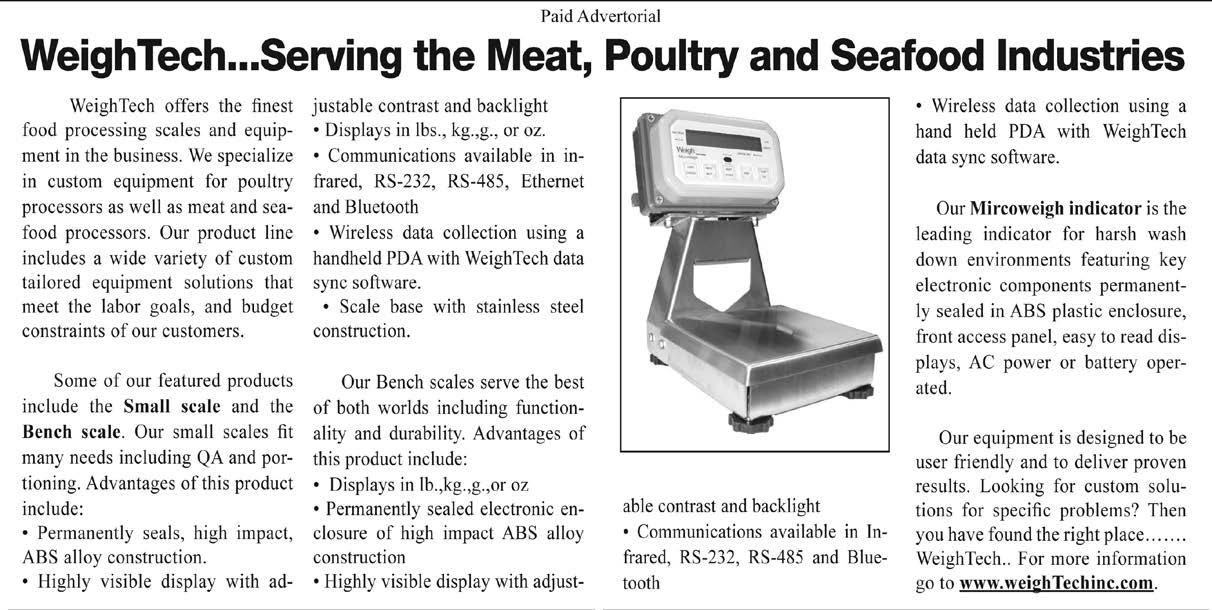
POULTRY TIMES POULTRYTIMES.COM 21 Paid Advertorial
WeighTech...
---
Ammonia scrubbers Figure 2


Benson Hill and Perdue Farms team up on broiler soybean meal
BY ELIZABETH BOBENHAUSEN Poultry Times staff
ebobenhausen@ poultrytimes.com
ST. LOUIS, Mo. — Benson Hill has been working on cracking the genetic code in a variety of plants, the company announces. Perdue Farms and Benson Hill have been working together to show how impactful a soybean-based meal made up of Benson Hill’s Ultra-High Protein, Low Oligosaccharide (UHP-LO) soybeans could affect broiler diets.
After completing food assessments, the results demonstrated that the use of the UHP-LO soybean throughout all phases of broiler production decreases feed costs and still upholds performance levels, the companies noted, adding that the tests also indicated a high protein and metabolizable momentum in the soybeans.
Have shortened
hours? Face greater lumen depreciation than you expected?
A company release says, “as previously announced, Benson Hill’s UHP-LO soybean varieties demonstrate novel attributes for
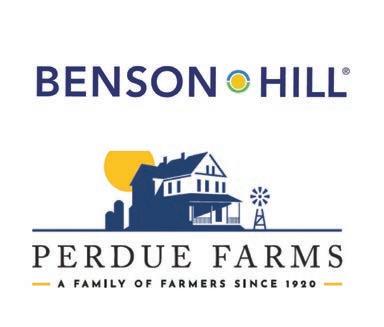
animal feed rations, enabling broadacre expansion of Benson Hill’s proprietary soybeans. Previous research identified three key product attributes of UHP-LO soy that uniquely position it for adoption by animal companies, soybean processors, and farmers. These key attributes are higher protein levels, lower anti-nutritional factors, and competitive yields.”
“Our ongoing work with Perdue and other
leading poultry producers opens up opportunities for diversifying soy options in animal feed and shows the benefits our seed innovations can deliver,” Deanie Elsner, CEO of Benson Hill said. “These positive results validate more than 20 years of soybean breeding for quality traits, further enhanced by our CropOS technology platform, enabling us to offer an innovative soybean meal option to an already established market.”
Randy Mitchell, vice president of nutrition and research with Perdue Farms, added, “we’re encouraged by these latest results. We look forward to partnering with Benson Hill to further evaluate this value-added soybean meal derived from their proprietary soybean genetics in our commercial operations.”
“Trial results indicate there is enough value in soybean meal derived from Benson Hill UHP-LO soybeans to drive large-scale adoption by poultry producers,” Dr. Roy Brister, an independent animal nutrition and strategic poultry advisor, said. “Now is the time for the industry to build on this exciting innovation.”
LED by Innovation


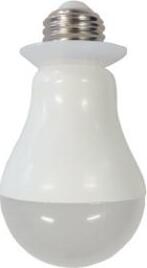









It’s time to look at what’s controlling your light bulbs.

Have shortened life hours?
Face greater lumen depreciation than you expected?
Face greater lumen depreciation than you expected?
Flickering at different lighting levels
Flickering at different lighting levels especially low light levels?





6/10/15W
Directional

- Directional Beam Angled LED's - designed with the exact beam angle to offer even FC lighting on the floor based on poultry house spacings/specs.
- Directional beam angle lamps offer 100% dimming while Omni lamps typically wont dim below 25%.
www.aglights.com/800-657-0509





Dim/ 14/26W Non Dim models 10/16/25W Dimm models
*Energy Star Approved for rebates
*Constant Current Driver delivers full current/wattage with minimal lumen loss at low voltages.
*CONSTANT CURRENT DRIVERS ARE A FEATURE THAT OVERDRIVE COMPETITORS DO NOT OFFER!
POULTRY TIMES POULTRYTIMES.COM 23 LED by Innovation 100% PURE TRAILING EDGE
Silicone Protection Gasket
of Dimmable
TIRED Poultry Dimmer
LED Lamp that
LED by Innovation 100% PURE TRAILING EDGE
light
Silicone Protection Gasket
It’s time to look at what’s controlling your
bulbs.
10/16/25W Dimm models of Dimmable LED Lamps that TIRED Poultry Dimmer www.aglights.com/800-657-0509
shortened life hours?
6/10/15W Directional Dim/ Non-Dim
Have
especially low light levels?
Star Approved for rebates
Current Driver delivers full current/wattage with minimal lumen loss at low voltages. CONSTANT CURRENT DRIVERS ARE A FEATURE THAT OVERDRIVE COMPETITORS DO NOT OFFER!
*Energy
*Constant
LED's - designed with the exact beam angle to offer even FC lighting on the floor based on poultry house spacings/specs.
Directional beam angle lamps offer 100% dimming while Omni lamps typically wont dim below 25%. LED by Innovation 100% PURE TRAILING
for:
us
problem!!! BEST LED control Full LED Life Low Level Dim Opstion Silicone Protection Gasket 6/10/15W Directional Dim/ Non-Dim 14/26W Non Dim 10/16/25W Dimm of Dimmable LED Lamp TIRED The ONE & ONLY Poultry www.aglights.com/800-657-0509
Flickering at different lighting levels especially low light levels? *Available with Junction *Energy StarApproved *IP66 Wet located *Constant Current with minimal lumen *CONSTANT ARE A FEATURE COMPETITORS -Directional Beam Angled LED's - designed with the exact beam angle to offer even FC lighting on the floor based on poultry house spacings/specs. - Directional beam angle lamps offer 100% dimming while Omni lamps typically wont dim below 25%. 100% PURE TRAILING EDGE ‘Trailing Edge’ Dimmer design is the only option for: It’s time to look at what’s controlling your light bulbs. Let us help you solve the problem!!! BEST LED control Full LED Life Low Level Dim Opstion Silicone Protection Gasket 6/10/15W Directional Dim/ Non-Dim 14/26W Non Dim models 10/16/25W Dimm models AskusaboutourNEWFeederlights The ONE & ONLY Poultry Dimmer www.aglights.com/800-657-0509 *Available with Junction Boxes. *Energy Star Approved for rebates *IP66 Wet located rated *Constant Current Driver delivers full current/wattage with minimal lumen loss at low voltages. *CONSTANT CURRENT DRIVERS ARE A FEATURE THAT OVERDRIVE COMPETITORS DO NOT OFFER! - Directional Beam Angled LED's - designed with the exact beam angle to offer even FC lighting on the floor based on poultry house spacings/specs. - Directional beam angle lamps offer 100% dimming while Omni lamps typically wont dim below 25%.
- Directional Beam Angled
-
‘Trailing Edge’ Dimmer design is the only option
It’s time to look at what’s controlling Let
help you solve the
life
of Dimmable LED Lamps that TIRED Have shortened life hours? Face greater lumen depreciation than you expected?
PT
Boehringer Ingelheim opens R&D lab in Mo.
BY ELIZABETH BOBENHAUSEN Poultry Times staff ebobenhausen@ poultrytimes.com
ST. JOSEPH, Mo. — Boehringer Ingelheim has established a new research and development laboratory in St. Joseph Mo. The company recently hosted a ribbon cutting ceremony to demonstrate its new facility and stated that the laboratory will “revolutionize the development of future products, including biotherapeutics.”
Boehringer Ingelheim explained, “this unique late-stage R&D laboratory, the only one of its kind in the U.S., is designed to streamline the process of transitioning products from development to manufacturing, enhancing our ability to serve animals better. The lab’s flexible design and proprietary equipment, which allows scientists to mimic operations, removes hurdles of transfers and maximizes efficiency.”

“As we venture into exciting new areas of innovation, this facility will play a pivotal role and will be instrumental in driving R&D for future products,” said Caroline Belmont, vice presi -
dent of U.S. global innovation, Boehringer Ingelheim.
The location is ideal because it is inside the business’s global operations, the company said, adding that it primarily will be
dedicated to developing livestock and horse products.
“Boehringer has a strong presence in the Midwest, with key facilities and operations contributing significantly to its global operations,” Belmont added. “This region is a crucial hub for the global animal health industry due to its rich agricultural heritage and extensive livestock farming. Boehringer’s strategic positioning in this community allows it to leverage local resources and expertise, playing a pivotal role in advancing the global animal health industry.”
Kim Young, president of the Kansas City Animal Health Corridor, said, “Boehringer Ingelheim is not just a global leader in animal health — they are a part of the fabric of our community. This facility underscores Boehringer’s dedication to leading the industry in research, development and manufacturing. The heart of the corridor are the companies choosing to invest in the region.”

POULTRY TIMES POULTRYTIMES.COM 24
PT
CDC seeks PPE usage for ag employees as HPAI protection
BY ELIZABETH BOBENHAUSEN Poultry Times staff
ebobenhausen@ poultrytimes.com
GAINESVILLE, Ga. — The Centers for Disease Control and Prevention have stated that the agency has spoken to state health executives and is asking health officials to disperse personal protective equipment to local farmers to stop the transmission of avian influenza.
In a recent Reuters report, CDC Principal Deputy Director Nirav Shah said, “while the risk to the U.S. public remains low, states should act to protect people with work exposures including people on dairy farms, poultry farms and in slaughterhouses.”
The CDC has insisted that farmers, employees, and emergency respondents wear PPE as they may be at risk when around sick animals, livestock, feces, raw milk, or contaminated surfaces.
The CDC is also giving information on how a person can pro-

tect themselves around animals that have contracted avian influenza. The organization says poultry farmers, livestock farmers, backyard bird flock owners, veterinarians and veterinary staff, animal health responders, public health responders and slaughterhouse workers are the most at risk for contracting bird flu. To avoid catching the dis-
ease recommends that a person stay within six feet of sick birds, livestock, Carcasses of birds or livestock, raw milk, udders from lactating cows, fecal matter, litter, surfaces, and pools of water.
The proper protective gear includes coveralls, NIOSH (National Institute for Occupational Safety and Health) particulate respirators, safety goggles, rub-
ber boots, rubber boot covers, a head or hair covering and gloves.
CDC says while wearing PPE a person should:
• Avoid touching yourself above your chest, especially your eyes, mouth, or nose, after touching any contaminated material.
• Do not eat, drink, smoke, vape, chew gum, dip tobacco, or use the bathroom.
• Use separate designated clean areas, one for putting on PPE and another for taking it off. When training employees to wear PPE, topics to cover include:
• Proper fit-testing, wearing, and use of respirators.
• Safe removal of respirators
• Safe disposal of disposable respirators
• Cleaning and disinfection of, and recommended respirator cartridge change-out schedule for, reusable respirators
• Medical contraindications to respirator use
• Use of only NIOSH approved respirators.
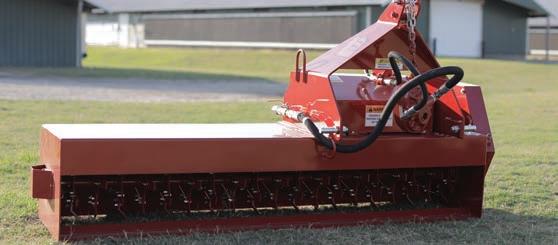



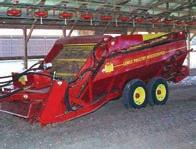


Complete l ine of l itter m anagement e quipment Industry Leader in Litter Management for over 50 years 912-367-4651 www.lbmfg.com sales@lbmfg.com Lewis Litter BLade dump Body Housekeeper tHe pouLtry House BLower Lewis windrower #5 Housekeeper “de-caking” pouLtry HousecLeaner the Lewis Crustbuster AerAte And Condition litter. New Product!
PT
Organic products topped record sales in 2023
BY ELIZABETH BOBENHAUSEN Poultry Times staff
ebobenhausen@ poultrytimes.com
GAINESVILLE, Ga. — The Organic Trade Association has released its 2024 Organic Industry Survey. In the report it states that the sales of certified organic items surpassed a record setting $70 billion in 2023 and the marketplace sales of organic items exceeded $69.7 billion.
That is an increase of 3.4 percent, OTA notes, adding that the organic market modified their supply chain and redoubled their efforts to cover the costs of doing business from increasing costs at the grocery store. With the industry expanding, the total cost of organic foods for 2023 was $63.8 billion and the total cost of organic non-food items was $5.9 billion.
“It is encouraging to see that organic is growing at basically the same rate as the total market. In the face of inflation and considering organic is already seen as a premium category, the cur-

rent growth shows that consumers continue to choose organic amidst economic challenges and price increases,” Tom Chapman, co-CEO of OTA, said. “Although organic is now a maturing sector in the marketplace, we still have plenty of room to grow.”
“It is essential to educate consumers that choosing organic is a straightforward way to tackle some of the greatest challenges we face,” Matthew Dillon, co-CEO
of OTA, said. “Whether it’s accessing healthy foods, improving transparency in supply chains, mitigating climate change, supporting rural economic resilience, protecting natural resources, or realizing the multitude of other benefits, effectively communicating and delivering on these promises is the key to expanding organic’s share of our dinner plate.”
In the organic market, dairy and eggs are the fourth largest group.
Last year, organic dairy and egg sales increased by 5.5 percent, around $8.2 billion. The sale of organic eggs and dairy grew an estimated 8 percent over all dairy and egg products. Milk and cream sales rose by 5 percent, approximately $4.2 billion. Dairy free or plant based dairy products increased by 14 percent, about $700 million. Meat, poultry and seafood goods account for 8.5 percent of all organic sales.
The OTA survey also states, “In 2023, the increase in dollar sales in the organic market was driven more by pricing than unit sales. But that said, consumers boosted their purchases of many organic products. Increases in unit sales were reported for up to 40 percent of the products tracked in this year’s survey. The survey also showed that prices for many non-organic products climbed at a faster rate than organic products. This means the price gap between conventional and organic is closing, which should help fuel growth for organic products in 2024.”
Better Airflow = Happier Flocks





POULTRY TIMES POULTRYTIMES.COM 26 • Tight Sealing • Rigid Design • Quality Components Mega Flow 58C 800-845-3374 FarmerBoyAg.com
Upgrade Your Fans Today!
PT
Ancera releases monitoring tools for poultry companies
BY ELIZABETH BOBENHAUSEN Poultry Times staff ebobenhausen@poultrytimes.com
BRANFORD, Conn. — Ancera, which it notes is a leading business in innovation for supply chain intelligence, is announcing new products such as monitoring tools. According to the company, these tools will enable poultry companies to see from third parties in real time their product’s efficiency.
Some companies that would benefit from this new technology would be makers of vaccines, feed additives, litter amendments, antimicrobials, sanitation supplies and quality control equipment, Ancera said, adding that these companies can keep track of the progressions of products and measure their influence on performance and food security. Also, it will lessen their costs and increase margins.
“Poultry production relies on many partners, and Ancera’s combined hardware-software monitoring system brings real-world evidence to improve the development, trials, and sales support of products that power the food supply chain,” Arjun Ganesan, CEO of Ancera, said. “As an objective third party source, we bring a new level of trust when data shows the effectiveness of their products, like vaccines, which translates into more business won for poultry industry allied companies and a more produc-
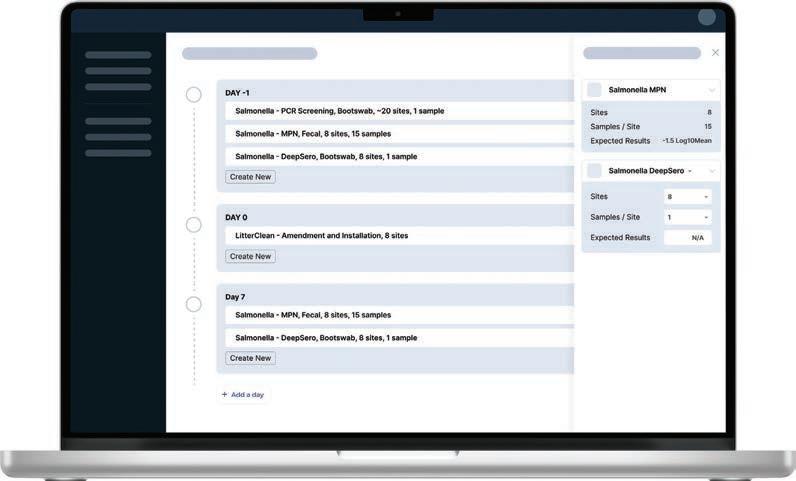
tive, safer food supply for consumers.”
According to Ancera, the new products are, “built upon a standardized and scalable framework, Ancera’s system allows companies to design, test, and price product field trials before ever deploying resources to the field. This enables all parties to agree on common success criteria, scope, and cost, followed by robust advanced analytics to assess product





effectiveness.
“Field trials executed under real-world conditions better represent their performance in a production system and allow allied companies to better quantify their value. Following a successful field trial, the system can remotely monitor the entire product deployment to predict product performance issues and proactively schedule technical services.”
POULTRY TIMES POULTRYTIMES.COM 27
WITH A NAME LIKE OURS POULTRY HAD TO BE OUR PASSION EXPERTS IN POULTRY CONSTRUCTION SINCE 1924. HENNINGCOMPANIES.COM HENNING
PT


Bench Scales
The WeighTech line of bench scales offers processors the best of both worlds: functionality and durability. Our bench scales feature our industry leading MicroWeigh indicator, and is available in many sizes to fit your processing needs.
2026 is declared International Year of the Woman Farmer
BY ELIZABETH BOBENHAUSEN
Poultry Times staff
ebobenhausen@ poultrytimes.com
GAINESVILLE, Ga. — U.S. Ambassador to the United Nations Linda Thomas-Greenfield, and USDA Deputy Secretary Xochitl Torres Small were in attendance as the UN announced that 2026 will be the International Year of the Woman Farmer.
The USDA led efforts to acknowledge the importance of women in farming. The resolution had more than 100 co-sponsors. The agency stated that women are accountable for approximately 50 percent


of the world’s food production. In some countries women manufacture between 60 and 80 percent of the food.
“The worldwide observance will call attention to the vital role that women play in global food and agricultural production,” USDA said. “It will also raise global awareness of the unique challenges women in agriculture face, catalyze action to help address those challenges, and support many of the UN Sustainable Development Goals, including those focused on gender equity, food security and poverty.”
Torres Small added, “from the field to the factory, from the classroom to the boardroom, women are fundamental to the future of agriculture. As leaders, it is our responsibility to make sure the next generation of women farmers have equal access to economic, educational and leadership opportunities, and that we dismantle the unique barriers they face so they can continue to take on the challenges of meeting the world’s growing food, fuel and fiber needs. USDA is proud to have led the U.S. government’s efforts in support of declaring 2026 as the International Year of the Woman Farmer, and we thank the many nations that signed on in support. We look forward to working with partners worldwide to scale up efforts that empower and advance women farmers while tackling global food security in 2026 and beyond.”
The USDA also noted that, “by shining a spotlight on women’s role in farming across the world, the International Year of the Woman Farmer will also raise awareness of constraints women face in areas including property rights and land tenure, access to credit and markets, and lack of technical and educational support. It will emphasize, as well, the importance of women in leadership roles to better ensure representation at the highest levels of decision-making.”
POULTRY HOUSE SOLUTIONS • Poultry Litter Admendment Spreader • Acid Alum Sprayer • Boric Acid Spreader • Litter Spreader newtoncrouch.com • 800.241.1350 1-800-457-3720 www.weightechinc.com
1649 Country Elite Drive, Waldron, AR 72958 Phone: 479-637-4182 Fax: 479-637-4183 The patented industry leading electronic indicator for harsh washdown environments
In today’s fast paced processing world, efficient, reliable and rugged scale systems and equipment are crucial.
PT

Brent Fielder, Chick-fil-A director of corporate social responsibility, speaks to the 2024 Community Scholar recipients at Chick-fil-A Dwarf House in Hapeville, Ga.
Chick-fil-A awards scholarships to this year’s ‘Community Scholars’
BY ELIZABETH BOBENHAUSEN Poultry
Times staff
ebobenhausen@ poultrytimes.com
GAINESVILLE, Ga. — Chickfil-A has given $25,000 in scholarship funds to 12 students that are a part of its Chick-fil-A Community Scholars.
These students were not affiliated with the Chick-fil-A franchise or restaurants. According to a statement released by Chick-filA, “the Chick-fil-A Community Scholars program is an expansion of Chick-fil-A’s existing education initiatives and an extension of Chick-fil-A’s corporate social responsibility commitment to care for people and communities. This year, an additional $26.4 million in scholarships was also awarded to Restaurant team members.”
The first scholarships to be awarded to students occurred
“Scholars are paired with a Chick-fil-A staff leader to mentor them. Scholars also have the chance to meet together virtually each month, creating an environment of collaboration, growth and fun.”
in 1973 at the fast-food chain’s first location, the Dwarf House in Hapeville, Ga. S. Truett Cathy awarded the first class with their scholarship funds.
Funds are still given at the Dwarf house, and awardees for this class is comprised of students that have finished extensive community service and some who have even established their own nonprofit organizations.
“The Chick-fil-A Community Scholars program is unlike other scholarship programs because it comes with the opportunity
for students to participate in a year-long leadership development and mentorship program,”
Brent Fielder, senior director of corporate social responsibility for Chick-fil-A, said. “Scholars are paired with a Chick-fil-A staff leader to mentor them.
Scholars also have the chance to meet together virtually each month, creating an environment of collaboration, growth and fun.”
Taylor Peterson, a 2023 Chickfil-A Community Scholar who attends the University of Michigan,
said “The Chick-fil-A Community Scholars program provides a national network of incredibly talented and hardworking peers, and each student has something different that drives them. Being surrounded by these accomplished students is inspiring. The community you build throughout this program are people you can rely on, ask questions to, and collaborate with for years to come.”
For more information about the Community Scholar program, visit www.chick-fil-a.com/community-scholars.
POULTRY TIMES POULTRYTIMES.COM 29
PT
Chick-fil-A photo
Inof will thatsaid. awareness in to andincluding equity, thewomen of our theeconomic,dismantle so the world’s needs. U.S. supportFarmer, nations look partners that women food “by women’s the Woman awareness areas landemphasize, women ensure -
Common mistakes when installing controller temperature sensors in your poultry house
BY MICHAEL CZARICK & DR. BRIAN FAIRCHILD University of Georgia
ATHENS, Ga. — A poultry house controller’s temperature sensors are, in a sense, its “eyes” enabling it to “observe” what is happening throughout a poultry house so it can accurately determine what equipment it needs to operate to maintain the proper environmental conditions throughout a house. As a result, a controller’s ability to maintain proper growing conditions for the birds is only as good as the information it receives from its eyes/temperature sensors.
In today’s large poultry houses, it is not uncommon for there to be significant variations in temperature from the center of the house to the sidewalls, as well as between the center of the house and the end walls/brooding curtain as well as from floor to ceiling. If a controller is unaware of hot or cold spots within a house, due to improper temperature sensor location, it cannot take the necessary corrective actions to address these hot and cold spots and bird performance, health and welfare can suffer.
The following is a list of mistakes commonly made when positioning controller temperature sensors within a house that can harm a grower’s ability to provide the proper growing conditions for birds throughout their houses:
1. Installing temperature sensors along the centerline of a house.
Temperature sensors positioned along the center of the house tend to paint the prettiest picture of house conditions because this is where temperatures tend to be most stable. The problem is that conditions nearer the side walls can be very different during both summer and winter.
During hot weather, the centerline of the house tends to be the coolest area of a house. But on a hot summer day, a controller needs to be aware of what is happening in the warmest locations to make sure those birds near the side wall are not becoming heat stressed due to naturally lower air velocities and heat entering through side wall curtains and/or poorly insulated concrete stem walls. Conversely, during cold weather, it tends to be cooler near the sidewall than along the centerline of a house due to excessive heat loss from poorly insulated stem walls, side wall curtains, leakage and poorly performing side wall inlets.
Lower air temperatures near the sidewall can not only result in chilled birds but can result in not only chilled birds but also increased litter moisture due to the fact that

cool air does a poor job of removing moisture from the litter. Higher litter moisture levels will in turn result in higher house ammonia concentrations and subsequent potential bird health and performance issues.
The controller needs to see these cooler areas of a house so it can take corrective actions (i.e., turn on heaters) before bird performance and health suffer. The thing to keep in mind is that in general if the birds near the sidewall are comfortable then most likely the birds toward the center of the house are comfortable as well. The converse is far less likely to hold true. As a result, to help ensure the maximum number of birds have optimal growing conditions, it is generally recommended to install temperature sensors within five to ten feet from the sidewalls (alternating sides of a house), ideally attached to either a feeder or drinker line.
2. Installing temperature sensors too far from house end walls and/or brood curtain(s) of a house. Often temperature sensors are positioned 40’ or more from the endwalls and/or brooding curtain(s) of a house. The problem with this is that these areas will tend to run cooler than they should during cold weather simply because the controller is unaware these traditionally leaky areas of a house are cool. As is the case with low air temperatures near the sidewalls during cold weather, low air temperatures near the end walls/brooding curtain tend to result in increased problems with caked litter, ammonia and chilled birds.
In addition, feeder control pans are typically located near the endwalls, and if it is too cool (or hot for that matter) there may not be enough birds in the area to eat enough feed from the control pan to trigger it to operate. To ensure that the areas near the endwall of a house remain warm and dry during cold weather, and there are sufficient number of birds to trigger feeder control pans, temperature sensors should be placed within 15’ of the endwalls/brood curtain(s).
3. Placing temperature sensors too close to a radiant heater.
The radiant heat produced by radiant heaters (brooders, tubes, etc.) will heat the floor and objects near them well above house air temperature. The closer an object is, a temperature sensor, for example, to a radiant heater, the more radiant heat it will receive and the more it will be heated above house air temperature. The problem is that those areas of the house that are receiving little to no radiant heat from a radiant heater may never reach optimal air temperatures because the controller may be determining house temperature based on sensors that are being heated to well above actual air temperature by the radiant heat produced by a house’s radiant heaters.
To help ensure that areas further from the radiant heaters don’t become too cool, temperature sensors should generally be positioned at the edge of a radiant heater’s radiant heating zone (areas that are primarily
POULTRY TIMES POULTRYTIMES.COM 30
Temperature sensors Figure 1

being heated by the radiant heat produced by a radiant heater).
For most radiant brooders, temperature sensors should be positioned no closer than 8 feet, and radiant tube heaters approximately 15 feet.
4. Installing temperature sensors too high above bird level.
Sensors placed high above the floor are most problematic during brooding, especially in those houses without circulation fans.
Sensors positioned two to three feet above the floor may be missing cool drafty conditions that may exist at chick level due to the tendency of cool, heavy leakage air to stay within a foot or so of the floor.
To avoid this issue, sensors should be attached to drinker lines so that they start off a flock within six inches or so above the floor. This also helps ensure that the temperature sensors are kept out of the reach of birds as the drinkers are raised.
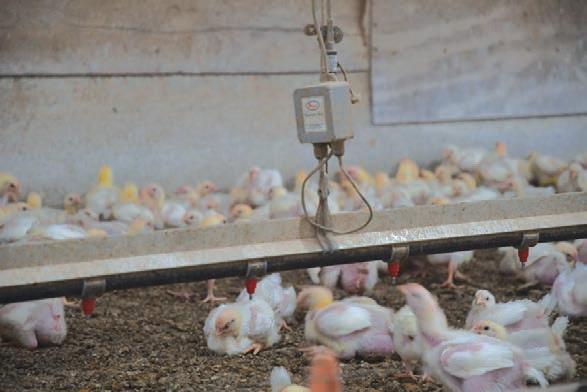
5. Not installing temperature sensors with an extra length of wire.
Though a producer may have a pretty good idea of where temperature sensors should be located, having extra sensor wire stored at the ceiling can make it much easier to tweak sensor location. A producer may find it beneficial to move a sensor farther from the sidewall or closer to the sidewall.
In addition, a sensor may be a
little too close to a sidewall inlet or radiant heater, resulting in the need to move the sensor a few feet.
Michael Czarick is an Extension engineer and Dr. Brian Fairchild is an Extension poultry scientist, both with the University of Georgia College of Agricultural and Environmental Sciences Cooperative Extension. More information can be obtained at www.poultryventilation.com.

----
Temperature sensors Figure 2
Temperature sensors Figure 3
Fieldale Farms honored with Ga. historical marker dedication
Gus Arrendale, right, Fieldale Farms CEO; and Dr. W. Todd Groce, left, president and CEO of the Georgia Historical Society, were on hand May 23 in Gainesville, Ga., for the unveiling of a new historical marker honoring Fieldale Farms and its economic history contributions to the state and poultry industry.
David B. Strickland Poultry Times

Whether it be windrowing to produce a pathogen & insect reduced bedding to grow a top performing flock of BIRDS, or pulverizing litter to make a soft fluffy bedding without the need to decake or add shavings, we have the equipment to fit your operation. We have various models, sizes and options to fit your needs. Keep in mind, our goal is customer service, quality equipment and of course the BIRDS.
 DAVID B. STRICKLAND Poultry Times Editor dstrickland@
DAVID B. STRICKLAND Poultry Times Editor dstrickland@
poultrytimes.com
GAINESVILLE, Ga. — The amount of poultry industry history that has originated in Gainesville, Ga., has always been a justification for the city to tout itself as the “Poultry Capital of the World.” Business and history combined on May 23 as a new historical marker was unveiled at Gainesville’s Poultry Park highlighting Fieldale Farms and its contributions to the state’s poultry industry history.
“It’s exciting to be honoring Fieldale Farms today,” said Dr. W. Todd Groce, president and CEO of the Georgia Historical Society. “Fieldale Farms is an important part of our state’s


ATTENTION POULTRYMANUFACTUREFARMERS!!! OF: WINDROWING/COMPOSTING & PULVERIZING EQUIPMENT MANUFACTURING, LLC For More Information: 717-445-4922 · CVLITTERPRO@GMAIL.COM Visit us online lvimfg.com
PT
POULTRY TIMES POULTRYTIMES.COM 32
economic history.”
Groce noted that for the past 15 years the Georgia Historical Society has been highlighting select iconic companies of the state to be featured in its Georgia Business History Initiative. Not only are these companies recognized with a historical marker erected at a significant location, but a case study of the company is put together and offered to 8th grade students in Georgia to learn more about these select companies and the contributions that they have made to the state’s economy and to the world.
Fieldale Farms prides itself on its offering of, “a great product and first-rate customer service,” Groce added. This new historical marker places Fieldale in the company of some of Georgia’s other iconic brands such as Chick-fil-A and CocaCola.
Providing a brief history of the company and its founders, a portion of the text on the new historical marker reads, “Tom and Lee Arrendale grew up in North Georgia, and Joe Hatfield in Tennessee, during the Depression. After World War II, the Arrendales expanded the family’s feed business; Hatfield built chicken processing businesses in Gainesville. In 1962 Ralston Purina bought Hatfield’s Gainesville Fryer Company and the Arrendale assets, and the three men became Purina managers. In 1972, the Arrendales and Hatfield bought Purina’s North Georgia poultry operations, combining their names to create Fieldale Farms.”
The marker adds that the Baldwin, Ga., based Fieldale Farms is one of the largest privately held poultry companies in the world.
Tom Hensley, who is president of Fieldale Farms, noted that this recognition is not just for the individuals who created the company, but is also, “a tribute to our 5,000 employees and 500 growers who work hard every day.”
“I don’t know anyone who is more deserving of an honor like the one that is being bestowed on them today than Tom Arrendale, Lee Arrendale and Joe Hatfield. There are not three more deserving individuals … I’m proud to call them all my

A new historical marker noting the importance of Fieldale Farms to the state’s poultry industry was revealed May 23 at Gainesville, Ga.’s
good friends, and one of them was my father,” said Gus Arrendale, Fieldale Farms CEO, and son of company founder Tom Arrendale.
“They were very integral in starting the chicken business here in Georgia and brought it to where it is today,” Arrendale said. “I think that it’s long overdue and they helped the economy of the state of Georgia so much and helped a lot of people along the way with them. What an honor it is to be here today for something that will remain long after we have all gone.”
“I don’t know anyone who is more deserving of an honor like the one that is being bestowed on them today than Tom Arrendale, Lee Arrendale and Joe Hatfield. There are not
three more deserving individuals
… I’m
proud to call them all my good friends, and one of them was my father.”
POULTRY TIMES POULTRYTIMES.COM 33
David B. Strickland Poultry Times
Poultry Park.

Texas A&M poultry science student shares experiences, future goals
BY BROOKE MCDONALD
Texas A&M University
COLLEGE STATION, Texas — Camryn Wilder ’25, a student in the Department of Poultry Science within the Texas A&M College of Agriculture and Life Sciences, grew up knowing Texas A&M University was going to be a big part of her life.
“My Aggie parents sang me the War Hymn every night before bed,” Wilder said. “Before I could walk, I dug around in my family closet until I could find my dad’s A&M jersey. I have
also always been involved in something agriculture-related, whether it was equestrian sports or raising goats.”
Fast forward to the start of her academic career in 2021, and Camryn continues to chant that Aggie War Hymn proudly, all while pursuing her degree. Her drive to study agriculture has also landed her an undergraduate research assistant position with Dr. Audrey McElroy, professor and head of the department studying intestinal health and nutrition.
In the following Q&A, Wilder
discusses her experiences as a current student, a recent intern, and her plans for a career in poultry research.
Why did you decide to study poultry science at Texas A&M?
I always knew I would be involved somewhere in the College of Agriculture and Life Sciences, but I was unsure where until I began judging poultry in high school. After discovering that the poultry science department had so many opportunities to develop and grow a
career, I knew it was the place for me.
Because Texas A&M plays a huge role in Texas FFA judging contests, I was able to hear numerous firsthand accounts about how personable the department can be. Since I started attending classes here, I have experienced fellow students who encourage me, professors who care about developing my future, and networking opportunities to get to know the many aspects of the poultry industry.
This is truly the best decision
POULTRY TIMES POULTRYTIMES.COM 34
Courtesy photo
Current poultry science student Camryn Wilder ’25 grew up surrounded by Aggie tradition, making it fitting that she now attends Texas A&M University.
“The actions of my internship helped me take my knowledge from the classroom and see the real value of why we sit in those maroon Kleberg chairs and hear from our highly experienced professors..”
I could have made for my college experience.
You recently finished an internship with United Animal Health. What were some of the high points of that experience?
My internship with United Animal Health allowed me to get glimpses of the many moving parts of animal agriculture research. United Animal Health began as a swine feed company but has expanded into the poultry and dairy cattle industries. I served as the monogastric research intern, focusing specifically on their poultry products.
I spent days meeting with employees of all departments of the company. I heard about their educational journeys, career highs and lows, and how their roles play into the company’s vision. When not interviewing employees, I rotated through sampling days on the farm, microbiology in the lab, research reading and writing in my cubicle, and business planning meetings with the research and development team.
The company trusted me as an eager learner to play roles in creating protocols for future research and adjust the trials we had running at the time. I was incredibly blessed to have such a well-rounded experience in the nutritional research world. I left feeling motivated to keep building, aiming to later contribute more to the poultry industry and feed the world.
How well did your education apply to your internship?
I fully believe I got the most out of my internship, and I don’t think that would have been possible without what I learned throughout high school and college. Concerning poultry knowledge, barn management practice came into play as we created the correct environmental conditions for the birds we grew.
When we collected different bird samples, avian anatomy came into use, and I could locate the proper functional components for the feed products we were testing. The concepts learned in poultry nutrition became extremely applicable when I saw the behind-thescenes of formulating diets for trial broilers.
The actions of my internship helped me take my knowledge from the classroom and see the real value of why we sit in those maroon Kleberg chairs and hear from our highly experienced professors.
Tell us about the factors that made you want to become an undergraduate research assistant.
Before starting as a freshman at Texas A&M, I met with Dr. McElroy and Lesley Gleason to discuss the department and how I could get involved as soon as possible. Our first conversation was about potentially joining Dr. McElroy’s lab and seeing the research she focuses on. Being interested in the nutrition side of things, I was very excited to see how different feed additives can affect gut health.
While examining intestines and fecal material may not sound glorious, it is an extremely eye-opening way to see how intricate life can be. Chickens may look simple, but their bodies supply us with affordable nutrients, and learning what makes them healthier on the production side is worth exploring.
I love working in this lab. We have long workdays that leave us smelling pretty foul, but we always have fun working together.
What are your goals after graduating from Texas A&M?
After finishing my undergraduate degree, I plan to stay with the department and work toward a Ph.D. in poultry science, focusing on nutrition.
Once graduate school is complete, I hope to work in the industry as a poultry nutritionist, specifically in research.
While technical service is crucial, the research side can help make the best possible product to feed our world. I would be honored to play a part in improving the lives of producers and consumers.
Do you have any advice for students studying poultry science who are interested in a similar career path as you?
I discovered my passion for finding sustainable ways to feed the world because I talked to industry members. Step out of your comfort zone. Walk up, shake hands and talk with former students and representatives from visiting companies. Attend career fairs no matter your age.
Build your corner. You would be surprised by how many people are willing to be in it.
Company representatives are just regular people who were once in our shoes. Even if you are an introvert, write down questions beforehand to take the pressure off. Learning classroom knowledge is great, but people skills push you over the edge as a job candidate. That is why they say, “It’s not about what you know; it is about who you know.”
Tell us about your experience as an Aggie Poultry Ambassador program member.
Aggie Poultry Ambassadors, APA, allows poultry science students to act as advocates for the department, leading to recruitment for the industry when students graduate. I have enjoyed traveling alongside friends and professors to spread the word about what we can offer to incoming students. It means so much to me because these events played into my enrollment as a poultry science student.
We talk about scholarship opportunities, clubs and or-
ganizations, research, study abroad, internships, and much more.
My favorite APA trip I attended was to the 2022 Texas FFA State Convention. I traveled with department representative Ally Spears and fellow members Makensie Till, Dylan Nance and Ervey Sanchez.
We met thousands of students, handed out poultry science swag and even made fun TikToks with the FFA members. Fast forward to today, we still run into those members at livestock shows, judging contests and when they come to campus for their prospective student visits.
Connections do not have to stop with industry members ahead of you. I see student interaction through APA as the first step I am able to take to give back to those who have encouraged and poured knowledge into me.
What does your life look like outside of being an undergraduate student?
If I am not on the farm or in the classroom, you will likely find me at my church home, Brazos Fellowship. I have attended BF and the college ministry, Two42, since my freshman year.
College is enjoyable, but it can also be challenging at times. Without being rooted so deeply in my faith, I do not know how I would get through those difficult times. I am thankful for those around me who consistently point me back to Jesus.
These four years are so important, as students are finally experiencing the freedom to establish their own values to contribute to their purpose. How cool is it that we are able to walk alongside them, all while glorifying Jesus?
POULTRY TIMES POULTRYTIMES.COM 35-
JUNE
JUN 4 — AFIA/KSU-500, Fundamentals of Feed Manufacturing. Online course runs through July 9, 2024. Contact: American Feed Industry Association, 2101 Wilson Blvd., Suite 810, Arlington, Va. 22201. Ph: 703524-0810; www.afia.org.
JUN 4-6 — AFIA FOOD SAFETY MODERNIZATION ACT PREVENTIVE CONTROL QUALIFIED INDIVIDUAL TRAINING, The Inn at Opryland, Nashville, Tenn., Contact: American Feed Industry Association, 2101 Wilson Blvd., Suite 810, Arlington, Va. 22201. Ph: 703-524-0810; www.afia.org.
JUN 8 — AP&EA ‘EVENING OF FUN’, Birmingham–Jefferson Convention Center, Birmingham, Ala. Featured performer: Kameron Marlowe. Contact: Alabama Poultry & Egg Association, P.O. Box 140, Montgomery, Ala. 36101. Ph: 334-265-2732; www.alabamapoultry.org.
JUN 13 — WESTERN POULTRY CONFERENCE, Westerner Park, Red Deer, Alberta, Canada. Contact: Western Poultry Conference Association, E-mail: info@ westernpoultryconference.ca; https://westernpoultryconference.ca.
JUN 17-20 — FEED INDUSTRY INSTITUTE, Embassy Suites Minneapolis Downtown, Minneapolis, Minn. Contact: American Feed Industry Association, 2101 Wilson Blvd., Suite 810, Arlington, Va. 22201. Ph: 703524-0810; www.afia.org.
JUN 18-20 — SOUTHEAST EGG INDUSTRY REGIONAL CONFERENCE, Omni Grove Park Inn, Asheville, N.C. Contact: Empowered Events, Ph: 763-2846763; lara@empoweredeventsllc.com; Lisa Prince, North Egg Association, lprince@ncegg.org; https://southeastegg.org.
JUN 21-22 — 64TH ANNUAL POULTRY FESTIVAL, Rogers Convention Center, Rogers, Ark. Contact: The Poultry Federation, 321 South Victory Street, Little Rock, Ark. 72201; Ph: 501-375-8131; info@thepoultryfederation.com; www.thepoultryfederaiton.com.
JUN 24-28 — XVI EUROPEAN POULTRY CONFERENCE, The Valencia Conference Center, Valencia, Spain. Contact: Turevents & Go, C/Santa Teresa 12, Pta 3, 46001, Valencia, Spain. E-mail: info@epc2024. com; https://epc2024.com.
JUN 26-28 — FINANCIAL MANAGEMENT SEMINAR, JW Marriott, Marco Island, Fla. Contact:
USPOULTRY, 1530 Cooledge Road, Tucker, Ga. 30084; Ph: 770-493-9401; seminar@uspoultry.org; www.uspoultry.org.
JULY
JUL 9-10 — HATCHERY BREEDER CLINIC, Embassy Suites Downtown, Nashville, Tenn. Contact: USPOULTRY, 1530 Cooledge Road, Tucker, Ga. 30084; Ph: 770-493-9401; seminar@uspoultry.org; www. uspoultry.org.
JUL 9-11 — AAAP ANNUAL
MEETING, St. Louis Union Station Hotel, St. Louis, Mo. Contact: American Association of Avian Pathologists, 12627 San Jose Blvd., Suite 202, Jacksonville, Fla. 32223; Ph: 904-4255735; E-mail: aaap@aaap.info; www.aaap.info.
JUL 15-18 — PSA ANNUAL
MEETING 2024, The Galt House Hotel, Louisville, Ky. Contact: Poultry Science Association, 4114C Fieldstone Road, Champaign, Ill. 61822; Ph: 217356-5285; psa@poultryscience. org; https://poultryscience.org.
JUL 17 — AGTECH CONNECT CONFERENCE, University of Nebraska-Lincoln Innovation Campus, Lincoln, Neb. Contact: AgTech Connect, 2125 Transformation Drive, Suite 1000, Lincoln, Neb. 68508; www. agtechconnect.co.
JUL 29-31 — CHICKEN MARKETING SUMMIT, Renaissance Birmingham Ross Bridge Golf Resort & Spa, Birmingham, Ala. Contact: Nation Chicken Council, 1152 15th Street NW, Suite 430, Washington, D.C. 20005; Ph: 202-296-2622; E-mail: pburko@chickenusa.org; www. nationalchickencouncil.org.
JUL 29-31 — 64TH ANNUAL USGC BOARD OF DELEGATES MEETING, Salt Lake City, Utah. Contact: U.S. Grains Council, 20 F St. NW, Suite 900, Washington, D.C. 20001; Ph: 202-7890789; https://grains.org.
AUGUST
AUG 6 — AFIA/KSU-500, Fundamentals of Feed Manufacturing. Online course runs through Sept. 10, 2024. Contact: American Feed Industry Association, 2101 Wilson Blvd., Suite 810, Arlington, Va. 22201. Ph: 703524-0810; www.afia.org.
AUG 9-10 — TPA ANNUAL
MEETING & SUMMER GETAWAY, Gaylord Opryland Resort & Convention Center, Nashville, Tenn. Contact: Tennessee Poultry Association, 1404 N. Main St., Shelbyville, Tenn.; Ph: 931-225-1123; info@tnpoultry. org; www.tnpoultry.org.
AUG 19-21 — NATIONAL SAFETY CONFERENCE FOR THE POULTRY INDUSTRY, Hilton Sandestin Beach Golf Resort & Spa, Destin, Fla. Contact: USPOULTRY, 1530 Cooledge Road, Tucker, Ga. 30084; Ph: 770-493-9401; seminar@uspoultry.org; www.uspoultry.org.
AUG 22-23 — WOMEN’S LEADERSHIP CONFERENCE, Hilton Sandestin Beach Golf Resort & Spa, Destin, Fla. Contact: USPOULTRY, 1530 Cooledge Road, Tucker, Ga. 30084; Ph: 770-493-9401; seminar@uspoultry.org; www.uspoultry.org.
AUG 26-29 — NUTRITION CONFERENCE, Rogers Convention Center, Rogers, Ark. Contact: The Poultry Federation, 321 South Victory Street, Little Rock, Ark. 72201; Ph: 501-3758131; info@thepoultryfederation.com; www.thepoultryfederaiton.com.
SEPTEMBER
SEPT 5-6 — MEAT INDUSTRY FOOD SAFETY CONFERENCE, Indianapolis Marriott Downtown, Indianapolis, Ind. Contact: North American Meat Institute, 1150 Connecticut Ave. NW, Washington, D.C. 20036; Ph: 202-5874200; www.meatinstitute.org.
SEPT 10-12 — AFIA LIQUID FEED SYMPOSIUM, Radisson Hotel Salt Lake City Downtown, Salt Lake City, Utah. Contact: American Feed Industry Association, 2101 Wilson Blvd., Suite 810, Arlington, Va. 22201. Ph: 703-524-0810; www.afia.org.
SEPT 15-18 — NPFDA FALL MEETING, Loews Ventana Canyon Resort, Tucson, Ariz. Contact: National Protein & Food Distributors Association, 2014 Osborne Road, Saint Marys, Ga. 31558; Ph: 912-439-3603; www.npfda.org.
SEPT 16-18 — NTF 2024 LEADERSHIP CONFERENCE, AC Hotel by Marriott Washington, D.C., Capitol Hill Navy Yard. Contact: National Turkey Federation, 1225 New York Ave. NW, Suite 400, Washington, D.C. 20005; Ph: 202-898-0100; info@turkeyfed.org; www.eatturkey.com.
SEPT 19-20 — ENVIRONMENTAL MANAGEMENT SEMINAR, Hilton Sandestin Beach Golf Resort & Spa, Destin, Fla. Contact: USPOULTRY, 1530 Cooledge Road, Tucker, Ga. 30084; Ph: 770-493-9401; seminar@uspoultry.org; www.uspoultry.org.
OCTOBER
OCT 7-10 — POULTRY SYMPOSIUM, Rogers Convention Center, Rogers, Ark. Contact: The
Poultry Federation, 321 South Victory Street, Little Rock, Ark. 72201; Ph: 501-375-8131; info@thepoultryfederation.com; www.thepoultryfederaiton.com.
OCT 9-11 — PROTEIN PACT SUMMIT, JW Marriott, Austin, Texas. Contact: North American Meat Institute, 1150 Connecticut Ave. NW, Washington, D.C. 20036; Ph: 202-587-4200; www.meatinstitute.org.
OCT 10 — AFIA/KSU-500, Fundamentals of Feed Manufacturing. Online course runs through Nov. 5, 2024. Contact: American Feed Industry Association, 2101 Wilson Blvd., Suite 810, Arlington, Va. 22201. Ph: 703524-0810; www.afia.org.
OCT 16-17 — POULTRY PROTEIN & FAT SEMINAR, Embassy Suites Downtown, Nashville, Tenn. Contact: USPOULTRY, 1530 Cooledge Road, Tucker, Ga. 30084; Ph: 770-4939401; seminar@uspoultry.org; www.uspoultry.org.
OCT 17 — NCC ANNUAL CONFERENCE, Washington, D.C. Contact: Nation Chicken Council, 1152 15th Street NW, Suite 430, Washington, D.C. 20005; Ph: 202-296-2622; E-mail: pburko@chickenusa.org; www. nationalchickencouncil.org.
OCT 19 — GEORGIA POULTRY STRONG, Lake Lanier Islands, Buford, Ga. Contact: Georgia Poultry Federation, P.O. Box 763, Gainesville, Ga. 30503. Ph: 770-532-0473; Email: laurabeth@gapf.org; www.gapf.org.
NOVEMBER
NOV 6-8 — AFIA EQUIPMENT MANUFACTURERS CONFERENCE, Hyatt Regency Coconut Point Resort & Spa, Bonita Springs, Fla. Contact: American Feed Industry Association, 2101 Wilson Blvd., Suite 810, Arlington, Va. 22201. Ph: 703524-0810; www.afia.org.
2025 JANUARY
JAN 27-30 — NPFDA ANNUAL CONVENTION & SHOWCASE, Hyatt Regency Atlanta, Atlanta, Ga. Contact: National Protein & Food Distributors Association, 2014 Osborne Road, Saint Marys, Ga. 31558; Ph: 912439-3603; www.npfda.org. JAN 28-30 — IPPE (INTERNATIONAL PRODUCTION & PROCESSING EXPO), Georgia World Congress Center, Atlanta, Ga. Contact: USPOULTRY, 1530 Cooledge Rd., Tucker, Ga. 30084; Ph: 770-493-9401; info@ippexpo.org; www.ippexpo. org.
POULTRY TIMES POULTRYTIMES.COM 36
Calendar
New Texas A&M report gives insights on future chicken, beef, pork prices
BY PAUL SCHATTENBERG
Texas A&M University
COLLEGE STATION, Texas — A new report from the Texas A&M University College of Agriculture and Life Sciences Department of Agricultural Economics will help consumers understand and prepare for anticipated changes in the price of key cuts of beef, pork and chicken for summer and beyond.
The Texas A&M University Food Price Predictor study integrates historical data, current market trends and predictive models to offer a detailed projection of future retail meat prices. Timed with grilling season, this report assists consumers in effectively planning for summer barbecues.
The lead author for the report is Dr. Simon Somogyi, director of the Weston Agrifood Sales Program and Dr. Kerry Litzenberg, sales and economics endowed chair in the Department of Agricultural Economics. Co-authors included Dr. David Anderson, professor and Texas A&M AgriLife Extension Service specialist – livestock and food product marketing; Dr. Yong Liu, assistant professor; and Weifang Liang, a doctoral student, all in the department.
The team analyzed market data using statistical models to predict price changes for various meat products. The study focused on ground beef, chuck roast Choice, steak sirloin Choice, all pork chops and boneless chicken breast — all typical cuts of meat consumed during the traditional grilling season.
While a chuck roast is not considered a typical grilling cut, its prices provide some insight into other items such as ground beef and some steak cuts, such as flat iron steaks.
Food Price Predictor
The Texas A&M University Food Price Predictor shows a modest increase in most meat prices for this summer. Notable trends include modest increases in beef and pork prices and a de-

crease in chicken breast prices.
Price changes that occurred from September through February included:
• Boneless chicken breast: down 2.93 percent
• Ground beef: up 0.45 percent
• Chuck roast: up 4.68 percent
• Sirloin steak: up 0.77 percent
• Pork chops: down 3.93 percent
According to the report, meat price changes expected from May to October are:
• Boneless chicken breast: down 2.93 percent or $4.06-$3.91 per pound.
• Ground beef, 100 percent beef: up 0.1 percent to 0.7 percent or $5.13-$5.19 per pound.
• Chuck roast Choice: up 0.7 percent to 1.3 percent or $7.21$7.34 per pound.
• Steak sirloin Choice: up 0.1 percent to 0.6 percent or $11.72$11.78 per pound.
• Pork chops: up 0.1 percent to 1 percent or $4.24-$4.28 per pound.
Price expectations are averaged across the U.S. The report notes retail prices are heavily influenced by retail location, price discounting and other market variables.
Some of the key observations for the report are:
• The trend in lower chicken prices is largely due to efficiencies gained in poultry production, increasing production and lower feed costs.
• The anticipated slight increase in beef prices, particularly for ground beef and chuck roast, can be attributed to the seasonal surge in demand and reduced beef production.
• The slight uptick in sirloin steak prices is a response to a shift in consumer preferences toward higher quality cuts, fueled by an improving economy and reduced beef supplies.
• The modest increase in pork chop prices aligns with the expected seasonal increase in demand combined with slightly constrained supply levels.
• Greater profitability and lower

feed costs should keep chicken supplies plentiful.
“These report estimates will provide U.S. consumers with a better understanding of the factors that influence meat prices and help them estimate future meat costs, allowing households to budget more effectively,” Somogyi said.
Paul Schattenberg is a communications and media relations specialist with Texas A&M AgriLife Communications, based in San Antonio, Texas.

POULTRY TIMES POULTRYTIMES.COM 37 FLY PROBLEMS? Got Manure? We have the cure! Entomologist on Staff. Free Phone Consultation. www.kunafin.com 1-800-832-1113 WHOLESALE PRICES: On cartons, labels, flats, trays, nests, marketing items, poultry supplies & more! 866.333.1132 www.eggcartonstore.com ®
Compiled
by David B. Strickland, Editor 770-718-3442
dstrickland@poultrytimes.com
N ational Egg Market:
(May 20): New York eggs were up 4 cents for larger sizes and 2 cents higher for Medium. Regional and California prices were 2 cents higher for Jumbo, 2.5 to 6 cents higher for Extra Large, 1.5 to 4 cents higher for Large, unchanged to 3 cents higher for Medium, and 3 cents higher for Small. The undertone is fully steady to firm. Demand ws light to mostly moderate. Offerings were light to moderate. Supplies were light to moderate. Market activity was moderate. Breaking stock offerings were light to moderate for the light to moderate demand. Light type fowl supplies were moderate to heavy; processing schedules were normal, USDA Agricultural Marketing Service reports.
Shell egg demand indicator (May 15): Demand for shell eggs improved, changing the fortunes of the wholesale loose egg spot market which reversed a 4-week downward trend is moving higher. Much of the improved demand came from marketers looking to maintain an adequate supply on hand for regular needs. Retail demand remained light to moderate for increased spot market offerings but the pace of trading remains slow to moderate. Wholesale breaking stock prices halted their downward slide and are holding steady as offerings are slightly less available than in the previous week and supplies are at a comfortable moderate level. Trading was slow and schedules were running full to slightly reduced. The preliminary survey of retail outlets indicated a slight decrease in activity for conventional caged shell eggs.
N ational Broiler/Fryer Slaughter:
Broiler: Estimated slaughter for week ending May 18 was 156,656,000. Actual slaughter for the week ending May 11 was 156,377,000. Heavy-type hen: Estimated slaughter for the week ending May 18 was 1,725,000.
Actual slaughter for the week ending May 11 was 1,708,000. Light-type hen: Estimated slaughter for the week ending May 18 was 641,000. Actual slaughter for the week ending May 11 was 614,000.
Total: May 18: 159,022,000; May 11: 158,699,000.
Grain Prices
1/Current
Broiler Eggs Set/Chicks Placed in 19 States

POULTRY TIMES POULTRYTIMES.COM 38 Egg Markets USDA quotations New York cartoned del. store-door: Apr. 9 M ay 20 Extra large, down 81¢ $2.53--$2.57 $1.72--$1.76 Large, down 81¢ $2.51--$2.55 $1.70--$1.74 Medium, down 83¢ $2.40--$2.44 $1.57--$1.61 Southeast Regional del. warehouse: Apr. 9 M ay 20 Extra large, down 90¢ $2.53--$2.62 $1.63--$1.79 Large, down 92½¢ $2.51½--$2.59 $1.59--$1.69 Medium, down 87¢ $2.40½--$2.48 $1.53½--$1.61 Turkey Markets Weighted avg. prices for frozen whole young turkeys Weighted average (cents/lb.) F.O.B. shipper dock National Week ending May 17 (range) (weighted avg.) Hens (8-16 lbs.) 103-103 103.00 Toms (16-24 lbs.) 103-105 104.00 Week ending May 10 (weighted avg.) (Change) Hens (8-16 lbs.) 103.00 0.00 Toms (16-24 lbs.) 93.33 10.67
Report USDA National Composite Weighted Average For week of: May 17 $1.32.03 For week of: May 10 $1.32.14 Majority (whole body) May 17 Eastern Region: $1.04--$1.47 New York: $1.15--$1.46 Central Region: 90¢--$1.49 Chicago: 90¢--$1.45 Western Region: $1.09--$1.50 Los Angeles: $1.20--$1.49 Negotiated prices in trucklot and less-than-trucklot quantities of ready-to-cook whole body broiler/fryers delivere d to first receivers; prices in cents per pound
Broiler/Fryer
OHIO COUNTRY ELEV Mar. 25 Apr. 9 May 20 No. 2 Yellow Corn/bu. $3.97 $3.91 $4.20 Soybeans/bu. $11.74 $11.39 $12.13 (Courtesy:
Marion, Ohio)
Central Ohio Farmers Co-op,
MARKETS
EGGS SET (Thousands) CHICKS PLACED (Thousands) Ala Ark Ca,Tn,Wv Del Fla Ga Ky La Md Miss Mo. N.C. Okla Pa S.C. Tex Va Other states U.S. Total Apr. 13 35,072 25,757 13,628 5,544 1,225 36,569 8,000 3,655 8,063 17,655 8,893 25,562 5,644 7,969 6,312 19,405 5,734 12,281 246,968 Apr. 20 34,952 25,659 13,857 5,600 1,225 36,121 7,953 3,655 8,005 17,700 8,983 25,383 5,508 7,832 6,249 19,202 5,720 12,000 245,604 Apr. 27 35,071 25,961 13,575 5,643 1,225 36,178 8,017 3,655 8,005 17,339 8,766 25,575 6,032 7,835 6,178 19,572 5,662 12,055 246,344 May 4 35,025 25,808 12,972 5,725 1,225 36,354 7,862 3,515 8,065 17,199 8,550 25,611 6,081 7,627 6,128 19,932 5,833 12,084 245,596 May 11 34,331 25,866 13,299 5,610 1,225 35,933 8,133 3,654 8,065 17,365 8,901 25,424 6,062 7,381 6,171 19,689 5,700 11,970 244,779 Apr. 13 24,154 20,329 13,243 5,191 1,239 28,167 5,996 2,880 5,437 13,491 5,529 19,765 5,039 4,736 5,122 14,886 5,258 9,393 189,855 Apr. 20 24,667 21,607 12,319 5,510 1,191 28,169 5,891 2,909 5,221 13,883 5,517 19,744 3,662 5,087 4,918 14,859 5,041 9,311 189,506 Apr. 27 24,734 21,087 12,746 5,297 1,350 27,747 5,655 2,923 5,271 13,401 5,119 19,486 4,886 5,072 5,004 15,281 5,434 9,158 189,651 May 4 24,732 21,259 12,398 5,053 1,346 28,561 5,847 2,915 5,945 13,448 5,265 19,767 4,372 4,908 4,996 15,224 5,012 9,399 190,447 May 11 24,825 20,934 12,742 4,589 1,341 28,008 5,992 3,013 6,714 13,777 5,818 19,892 3,209 4,901 5,062 14,877 4,784 9,420
189,898
week
percent of same week last year.
as



© 2024 Hog Slat Inc. All Rights Reserved. Prices and promotions subject to change without notice. Hog Slat reserves the right to correct printing and pricing errors. Rely On Us. HEN SLAT™ Plastic Poultry Flooring For the past 50 years, we have made it our business to provide producers with the most cost-effective production equipment available... you can rely on it. www.hogslat.com | 800-949-4647

























































































































 DAVID B. STRICKLAND Poultry Times Editor dstrickland@
DAVID B. STRICKLAND Poultry Times Editor dstrickland@










